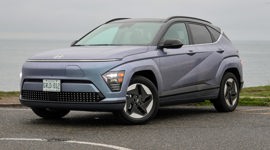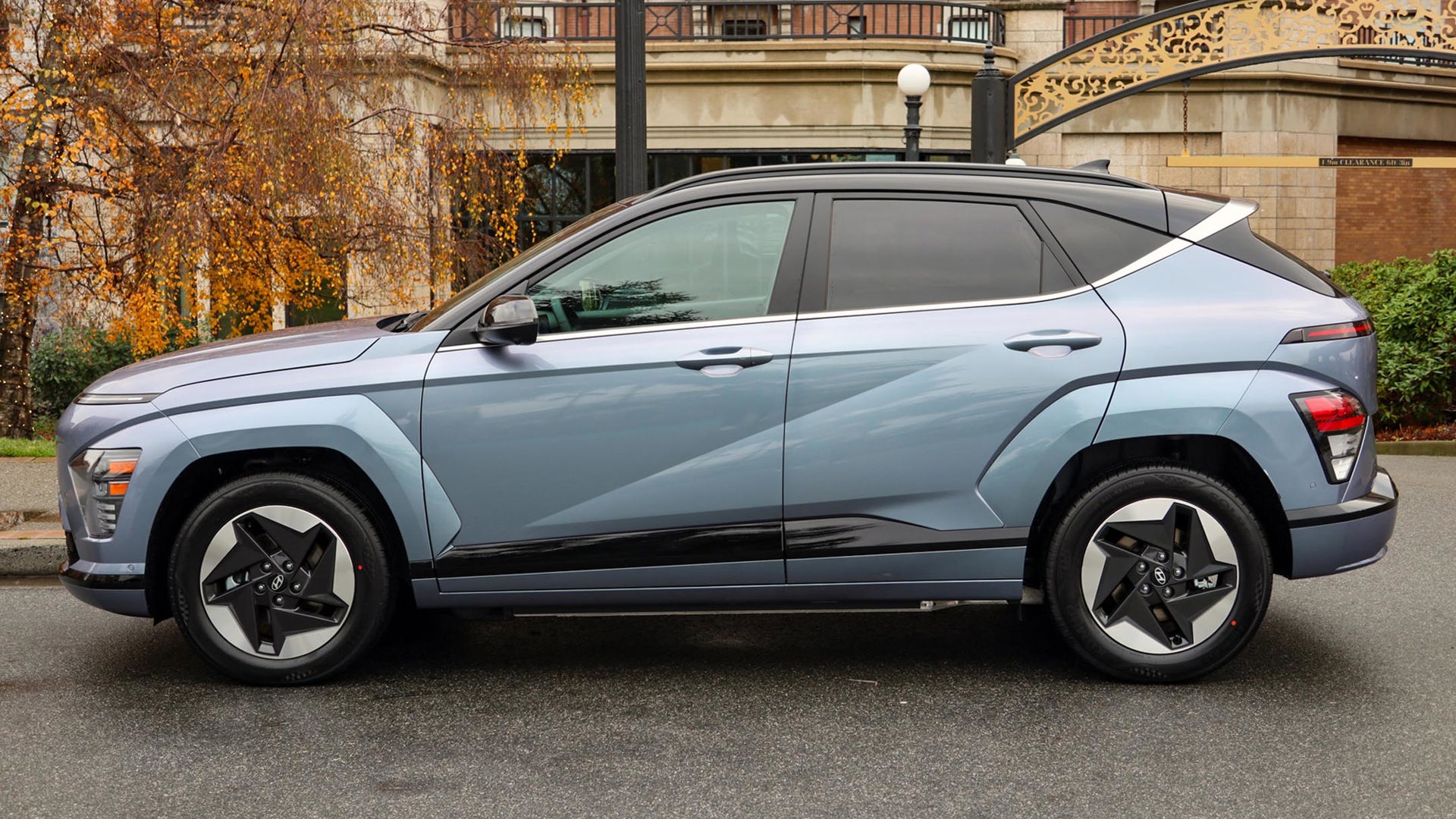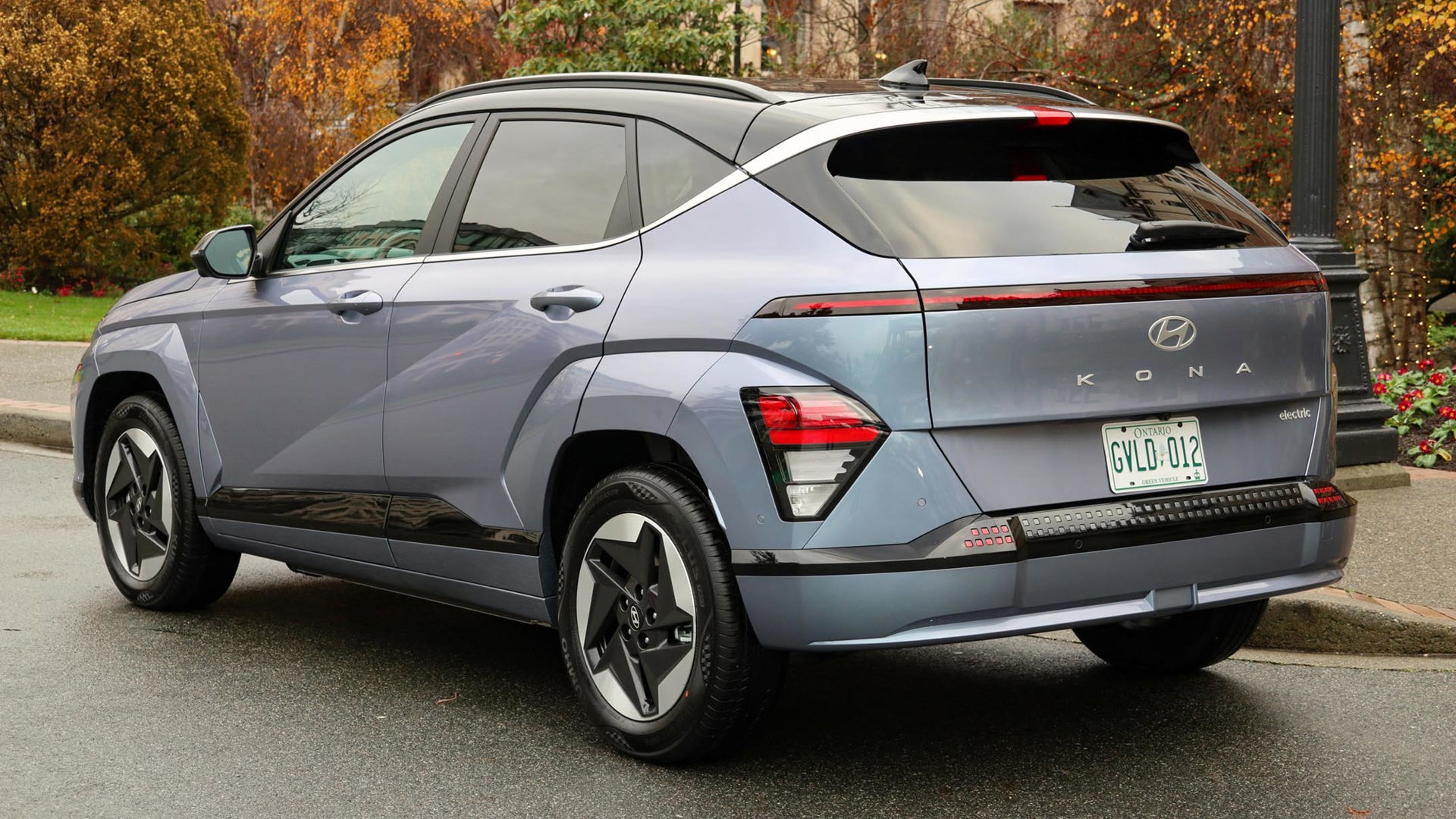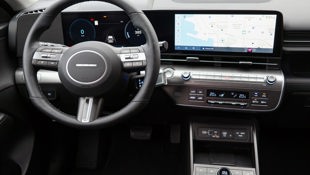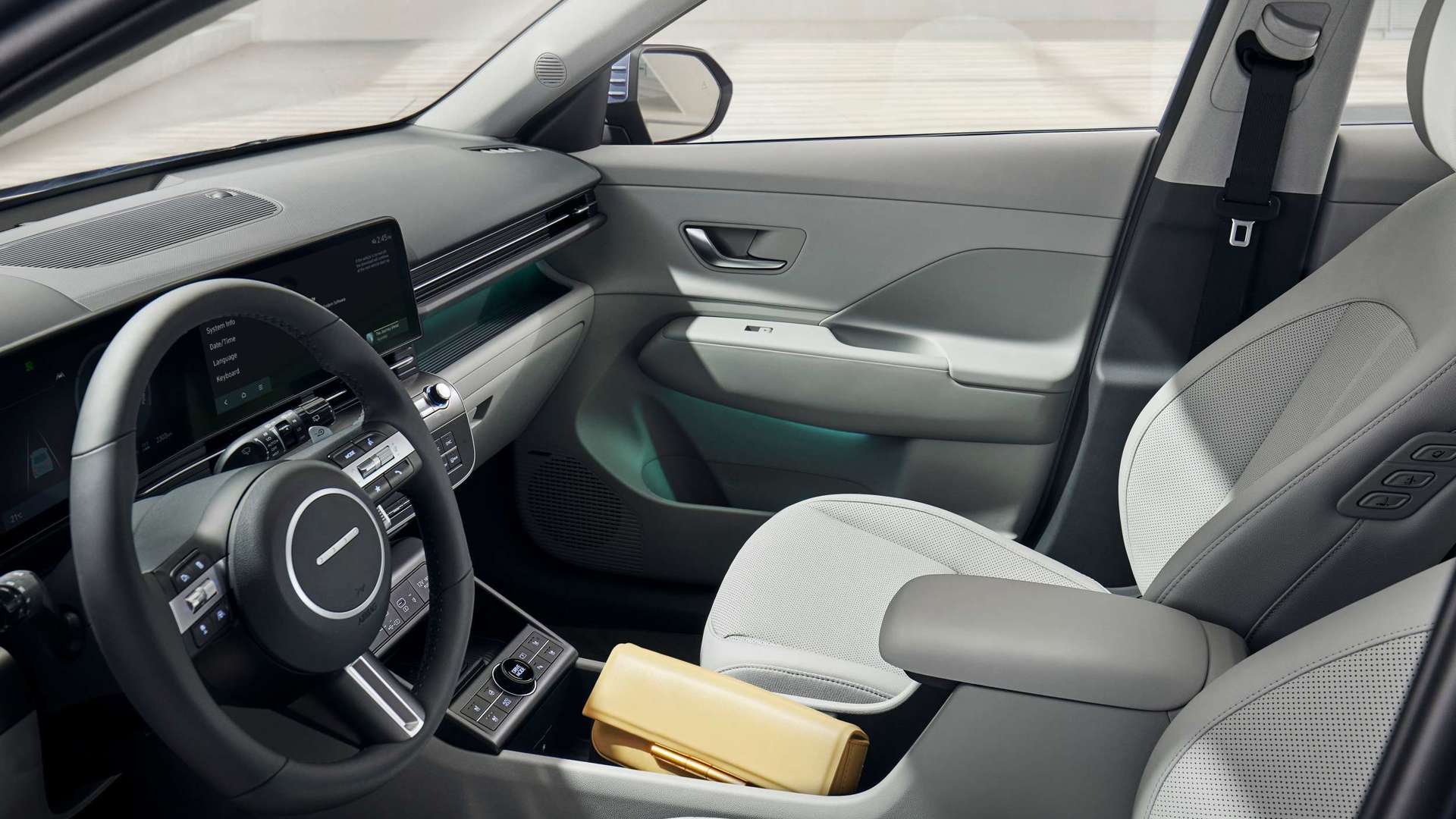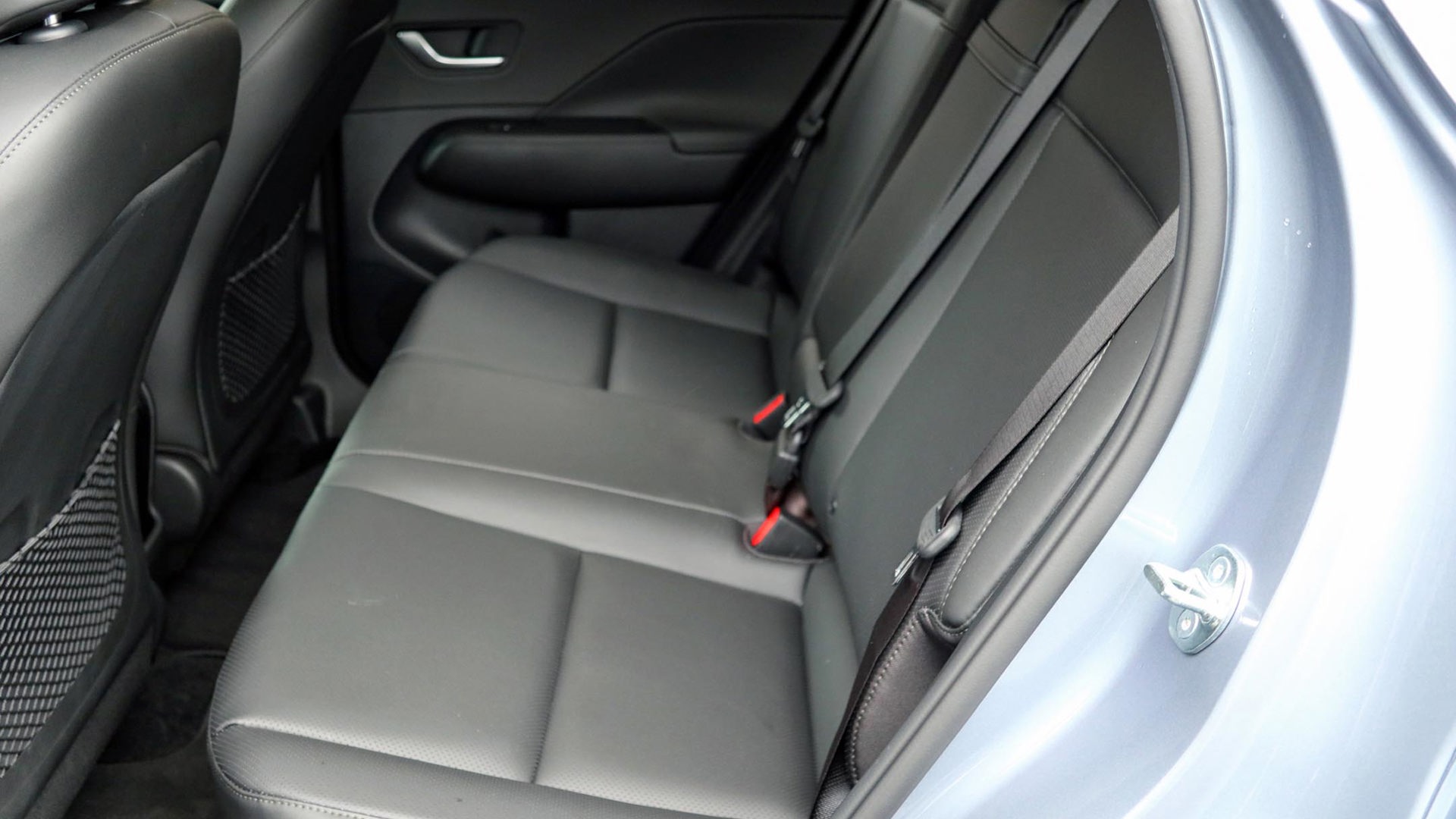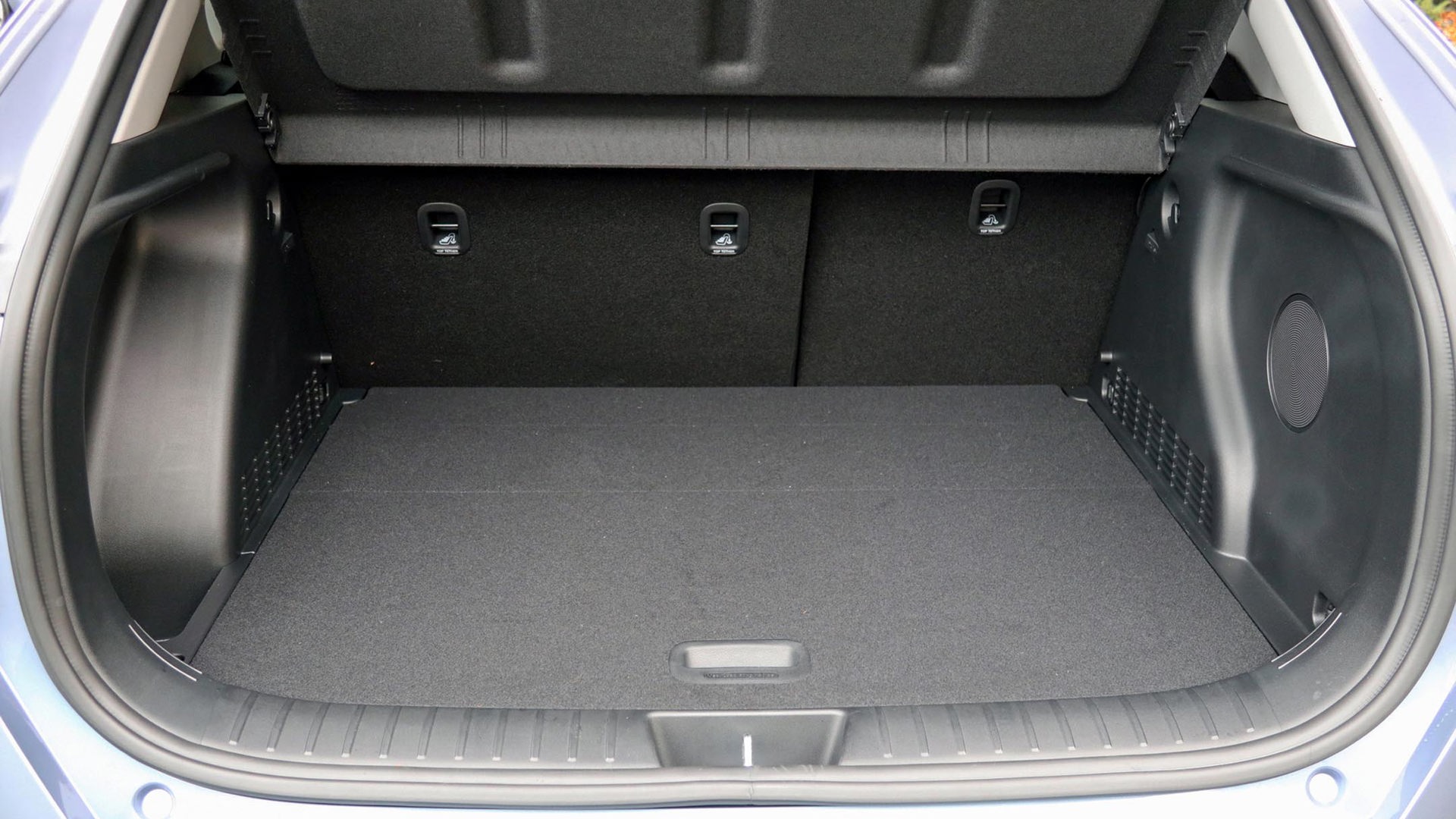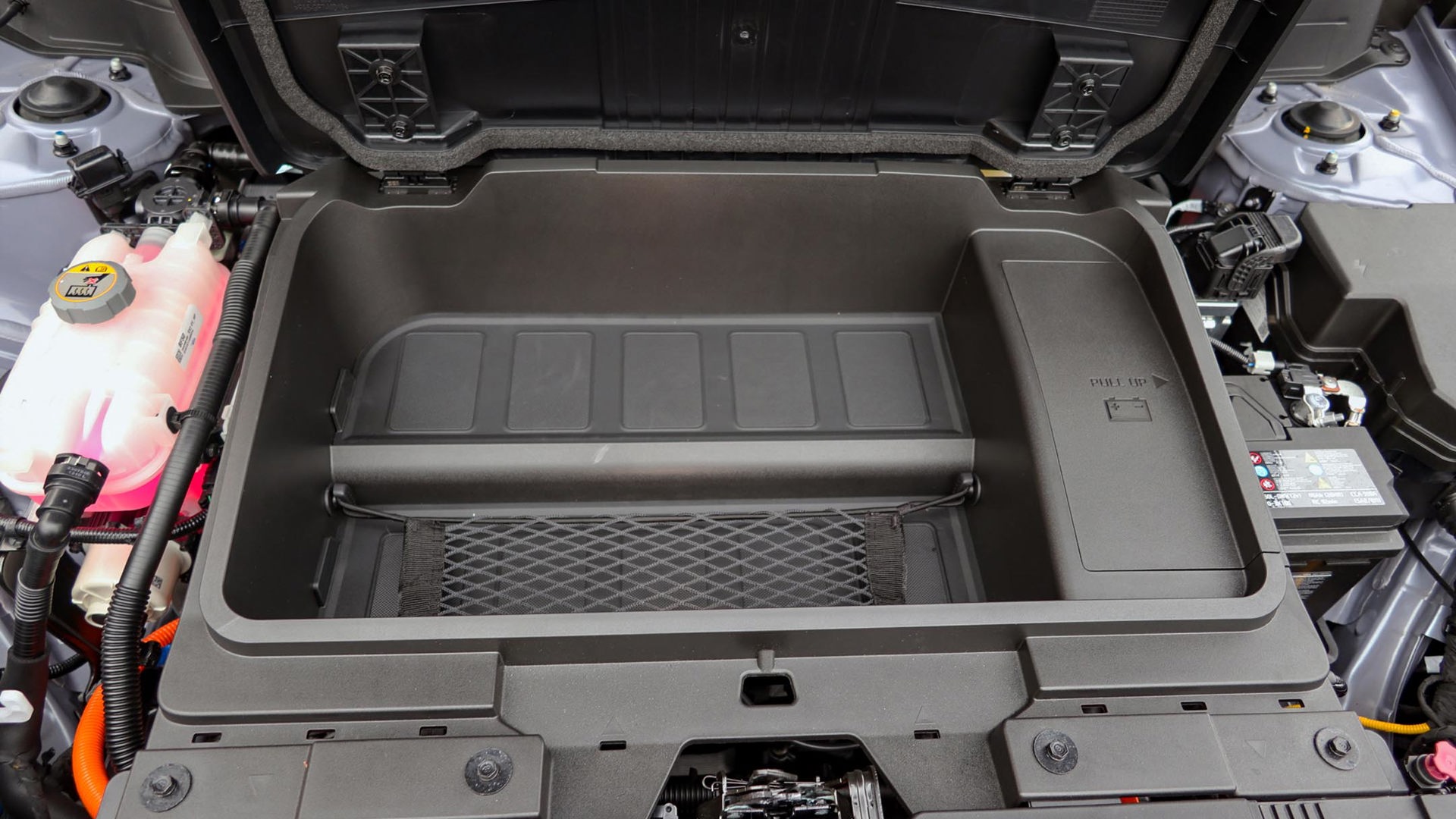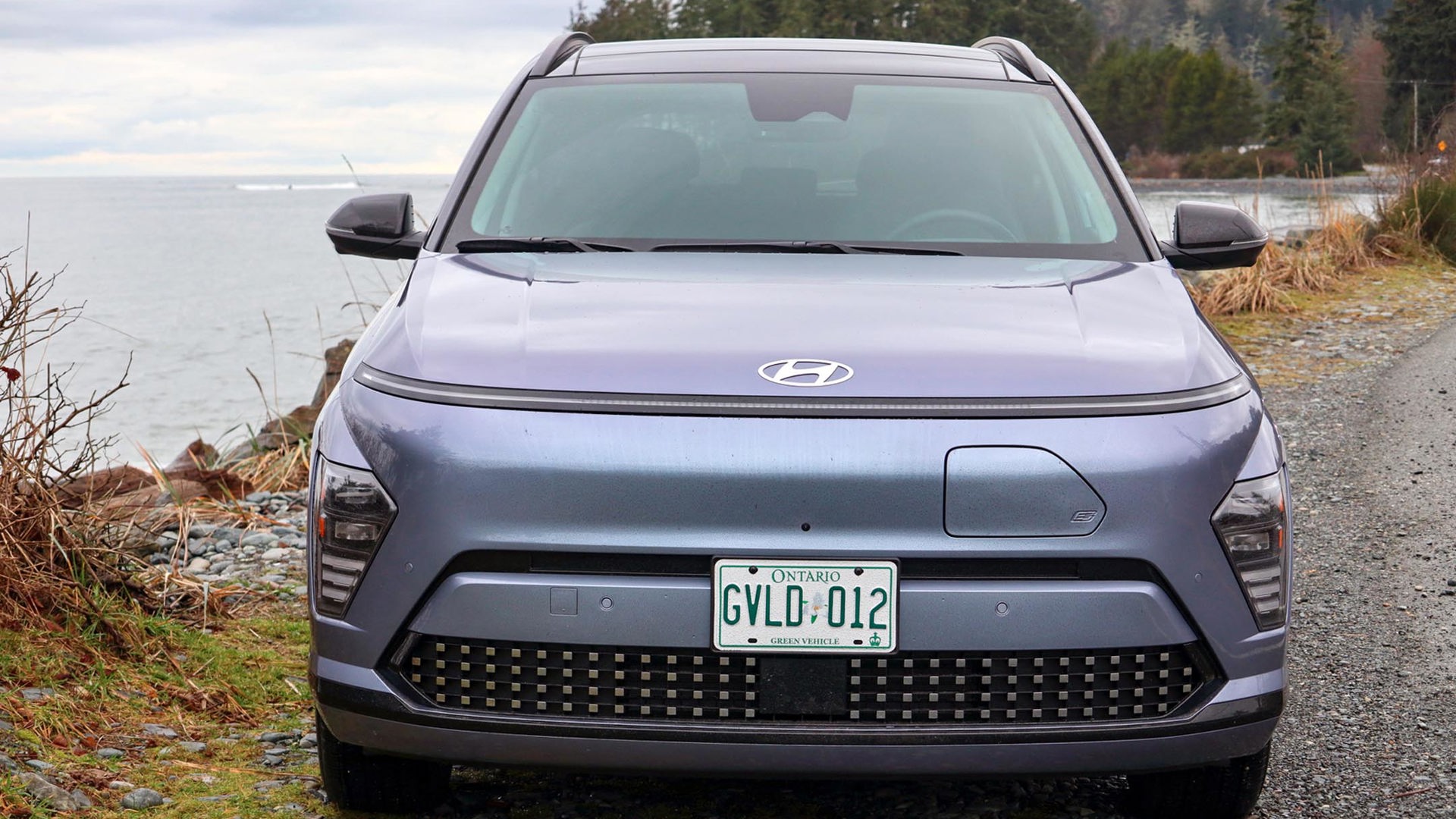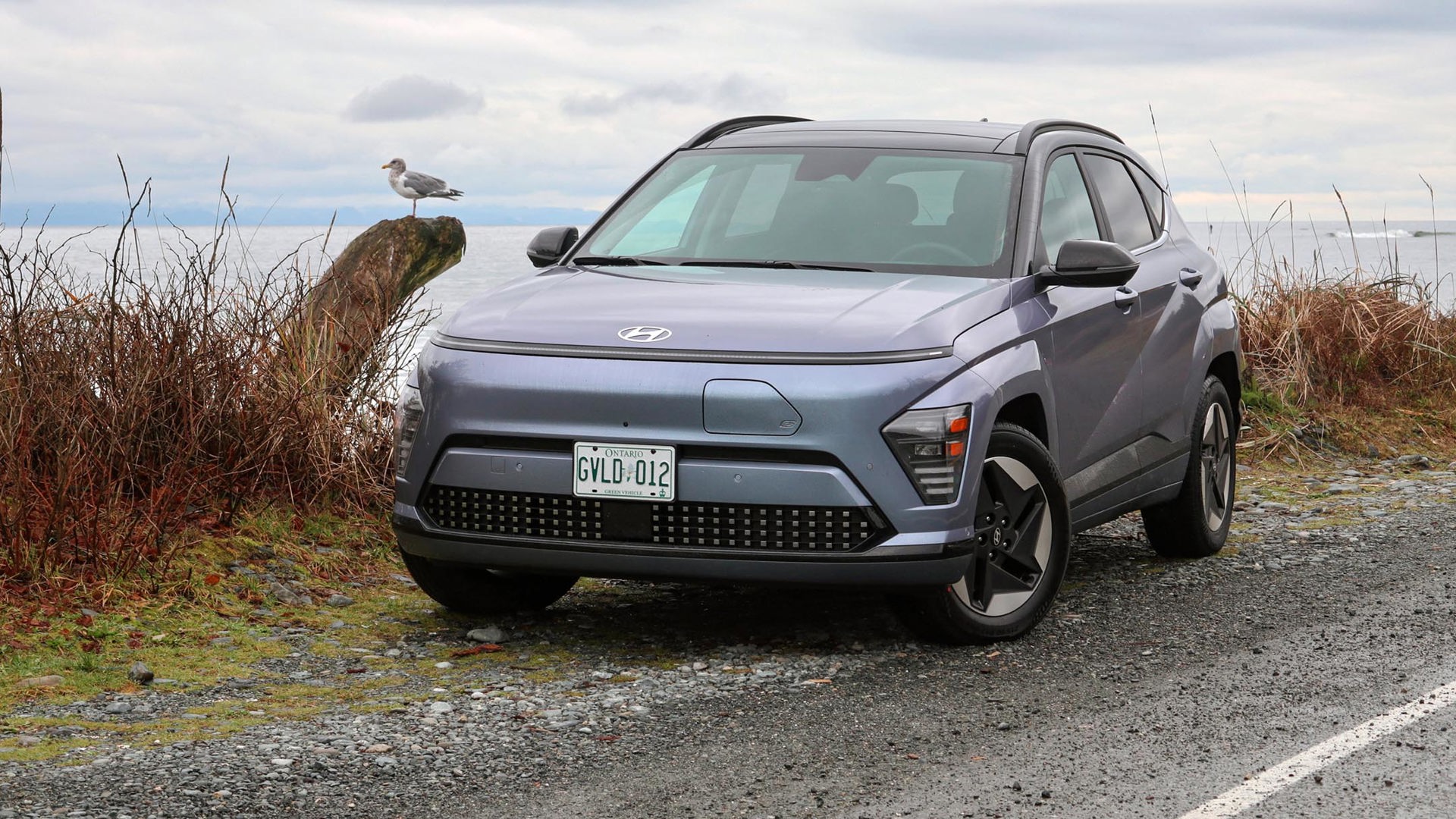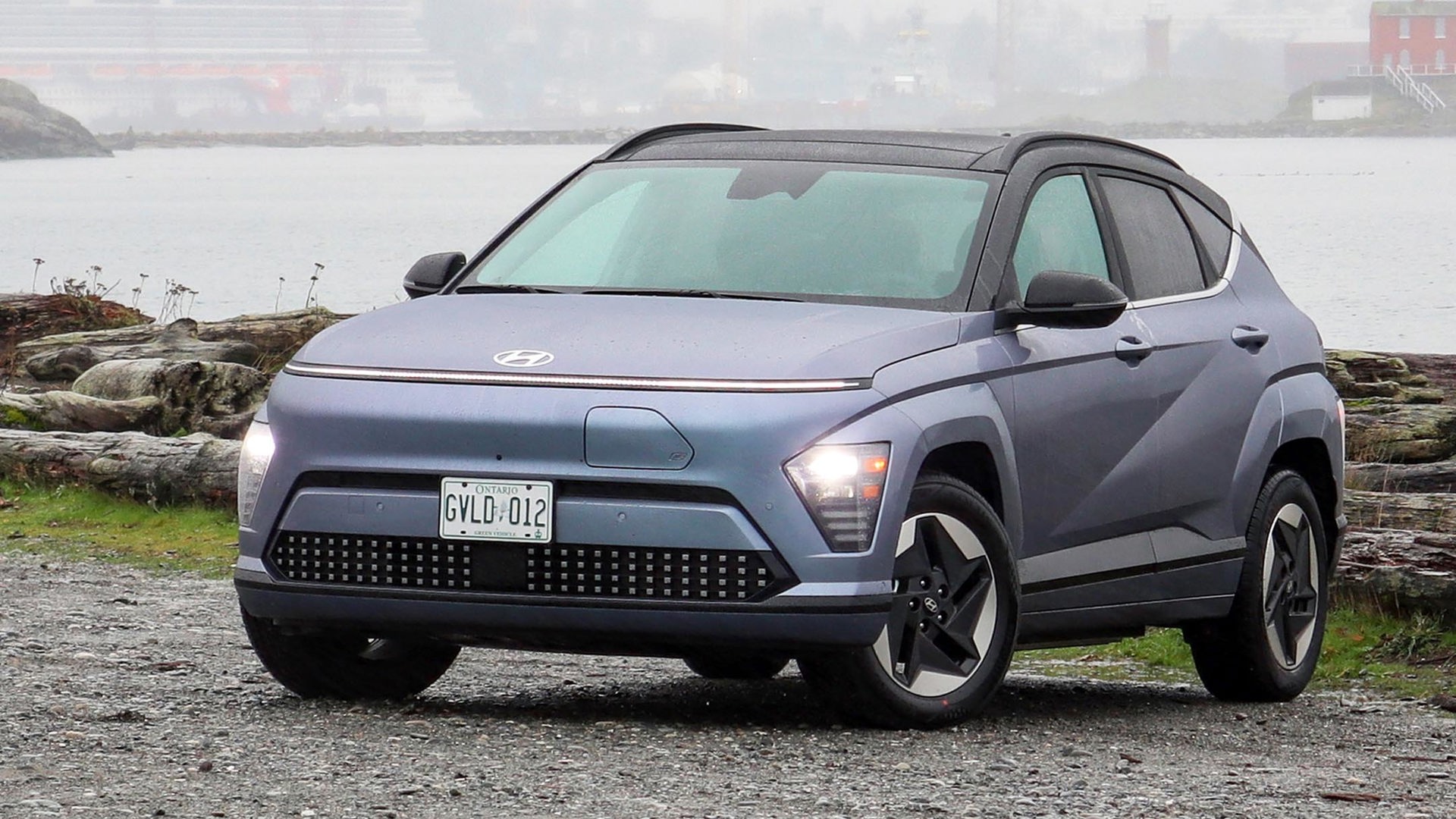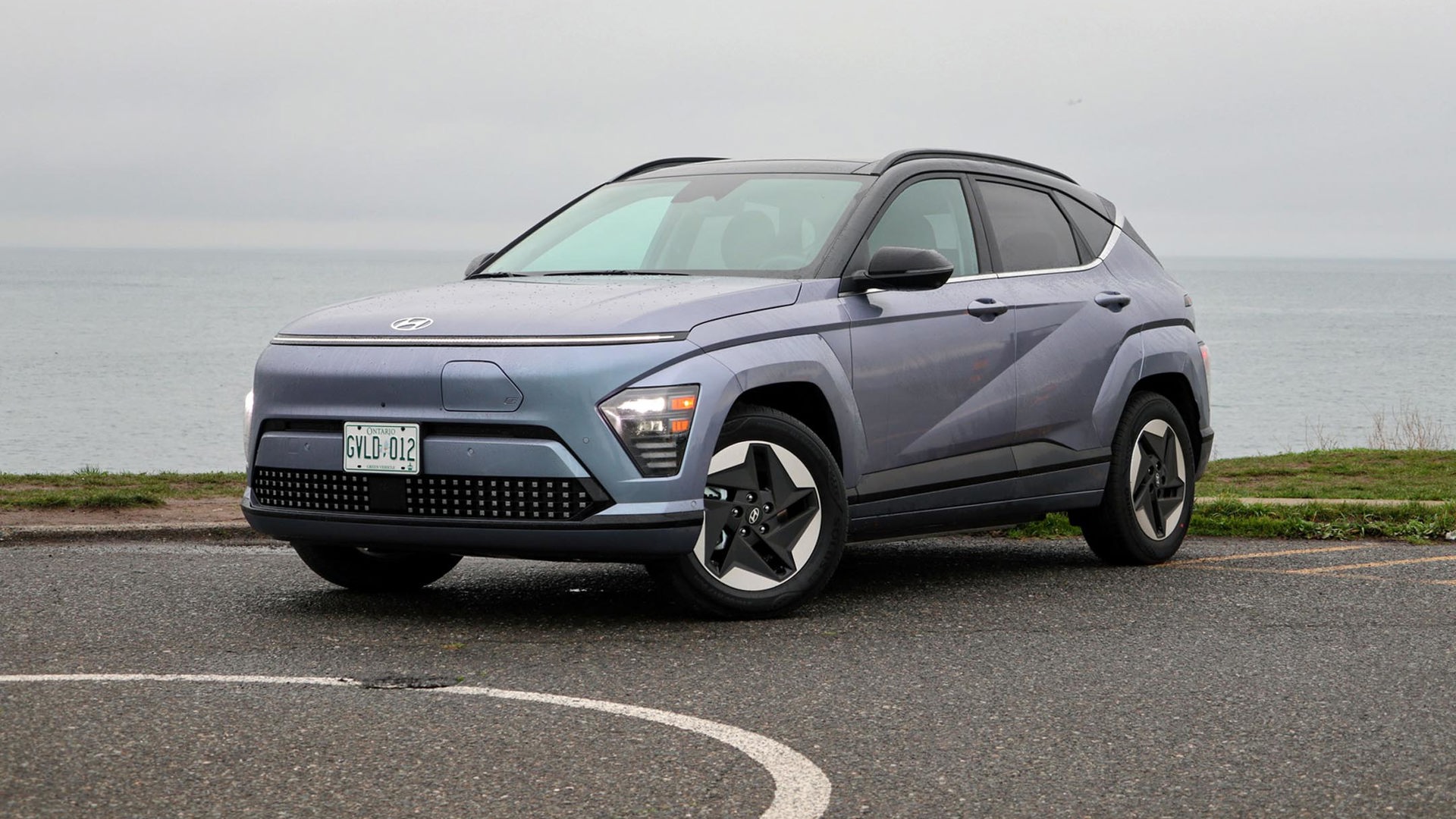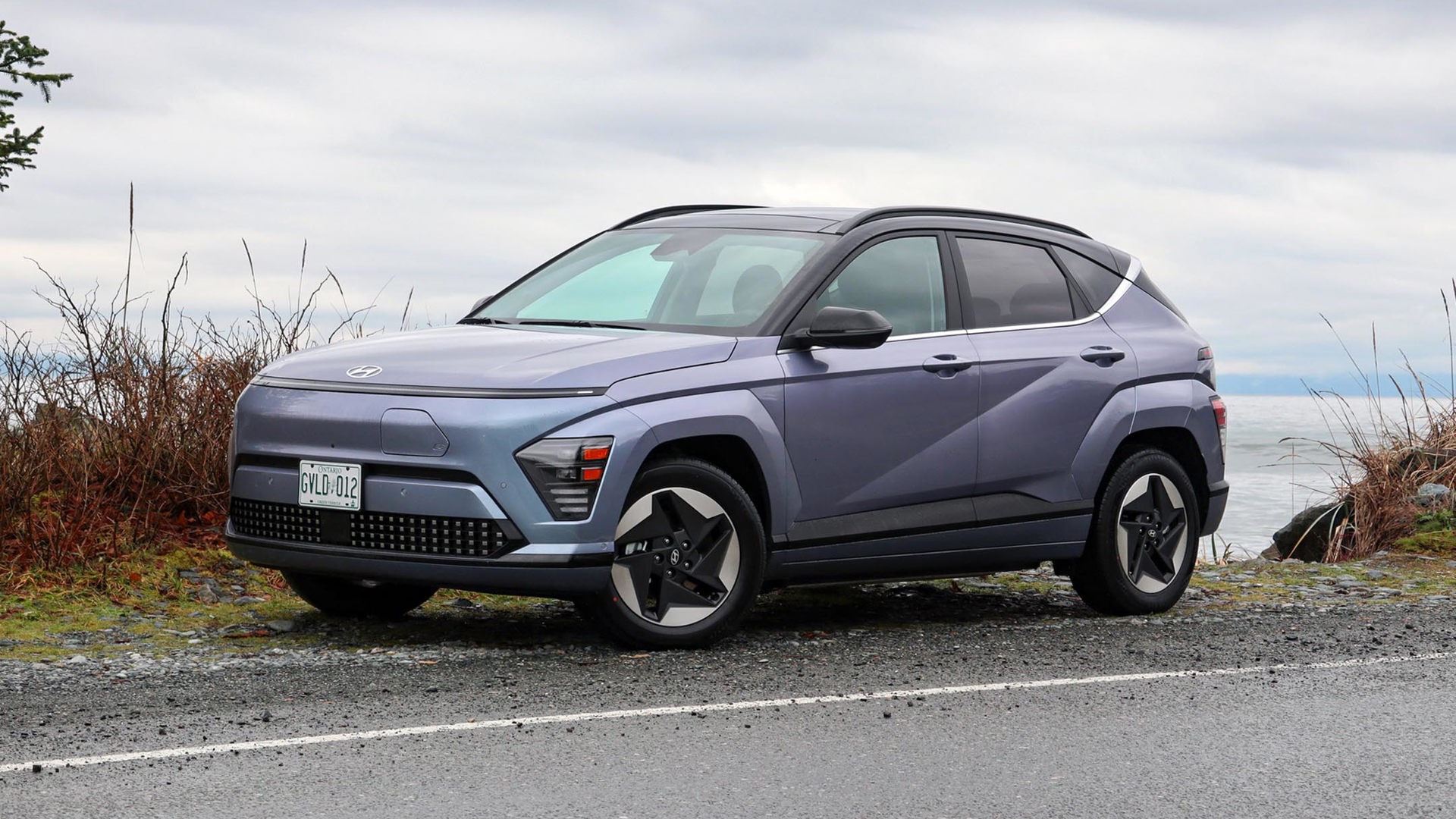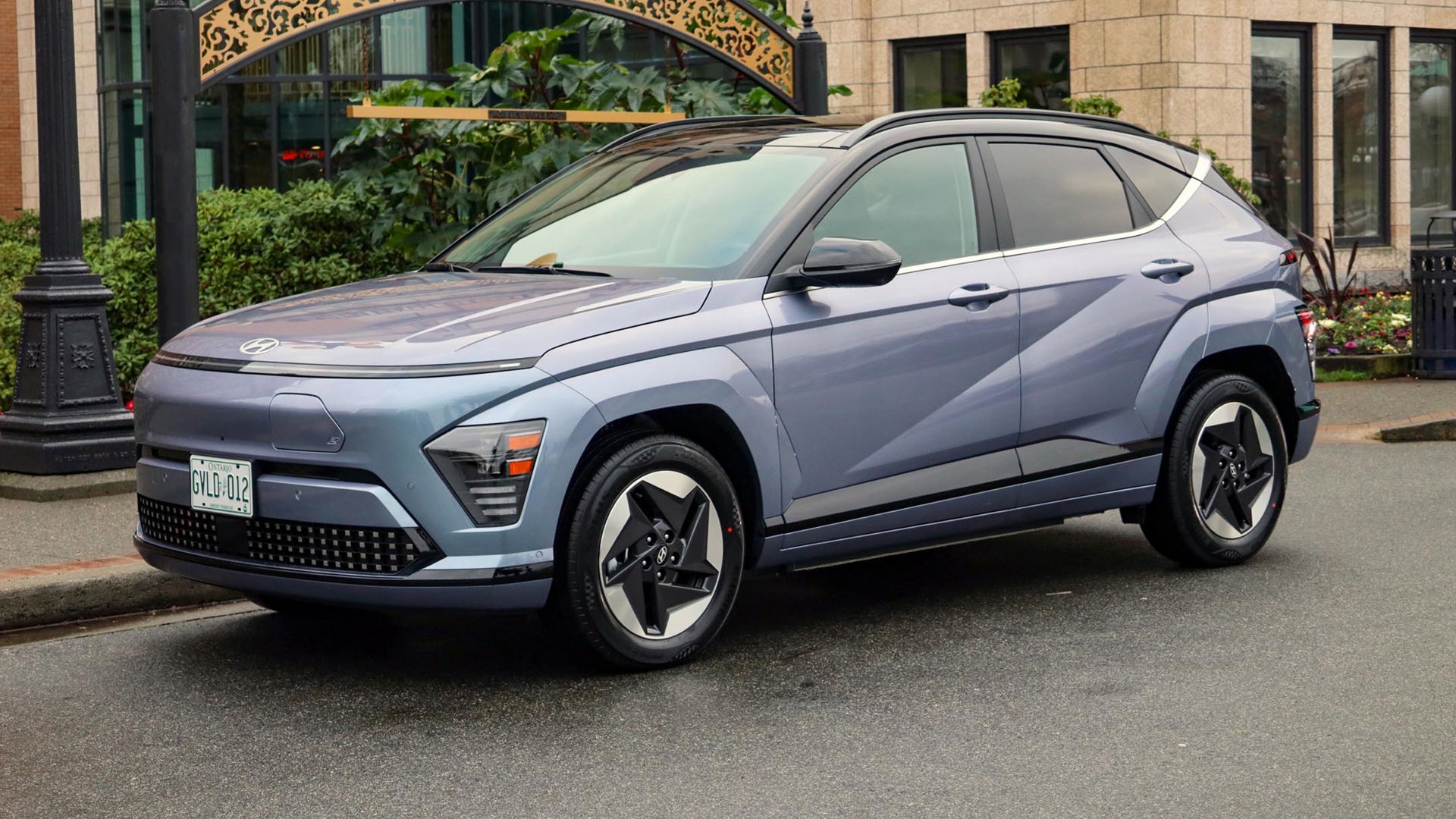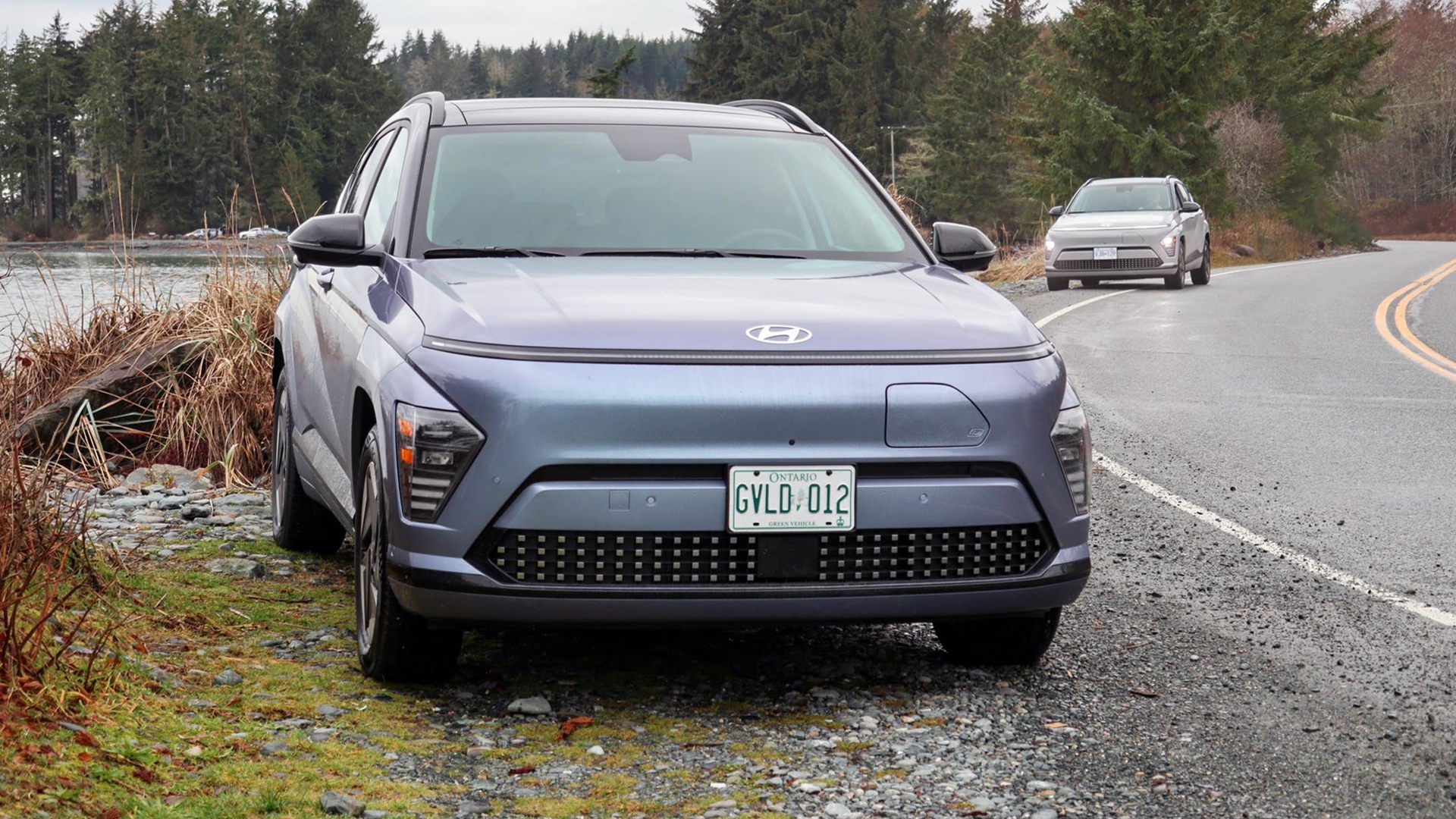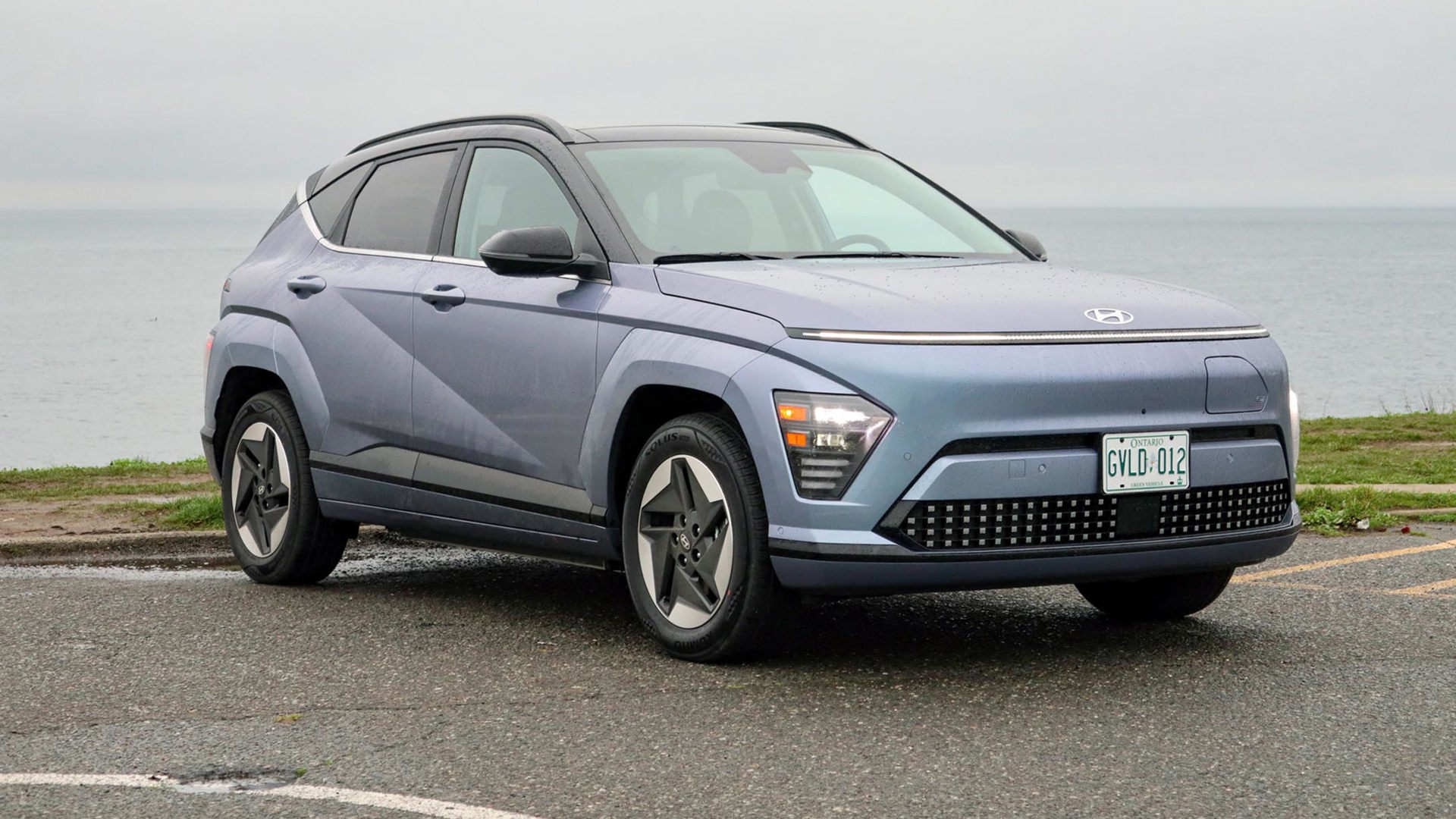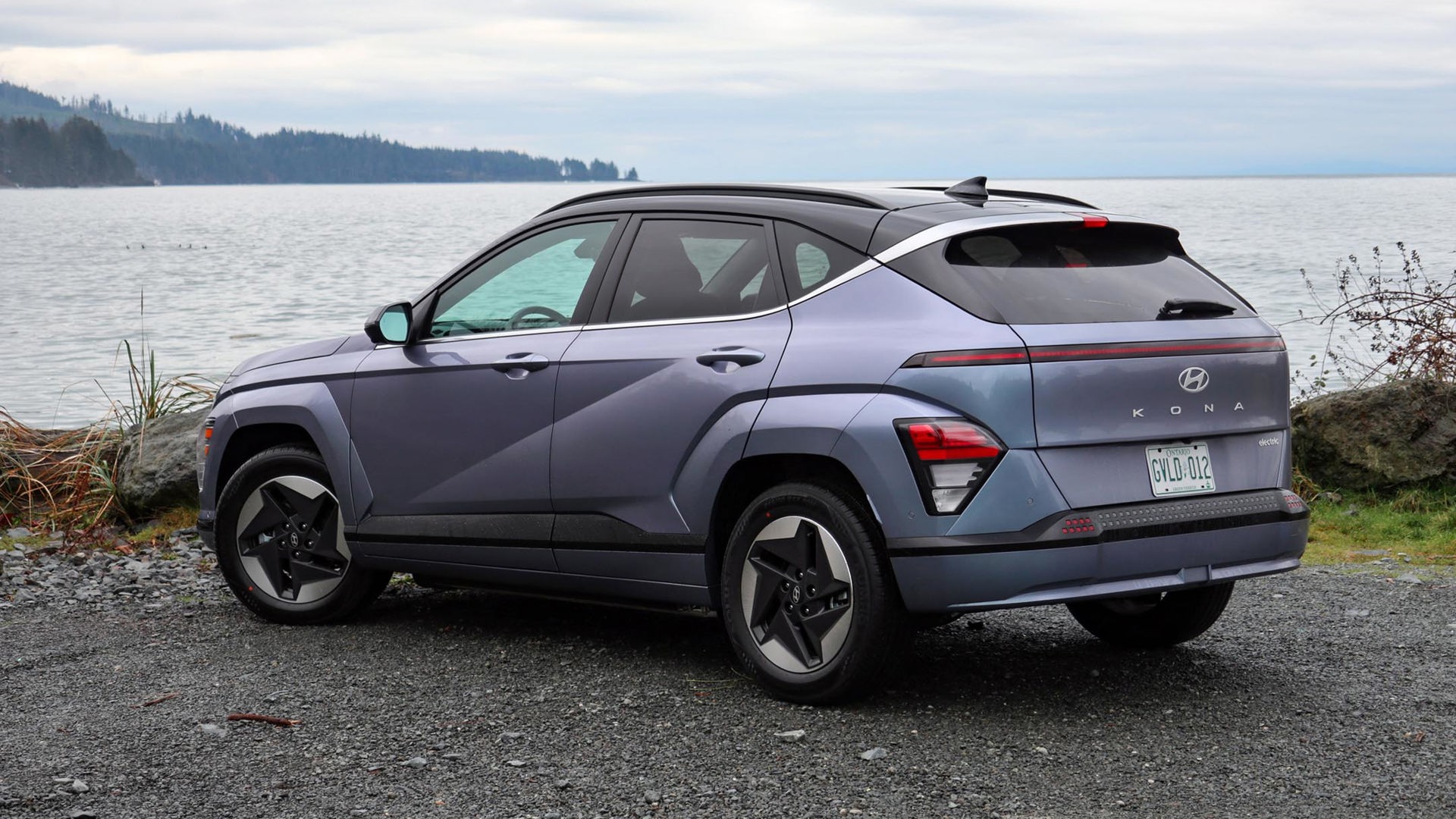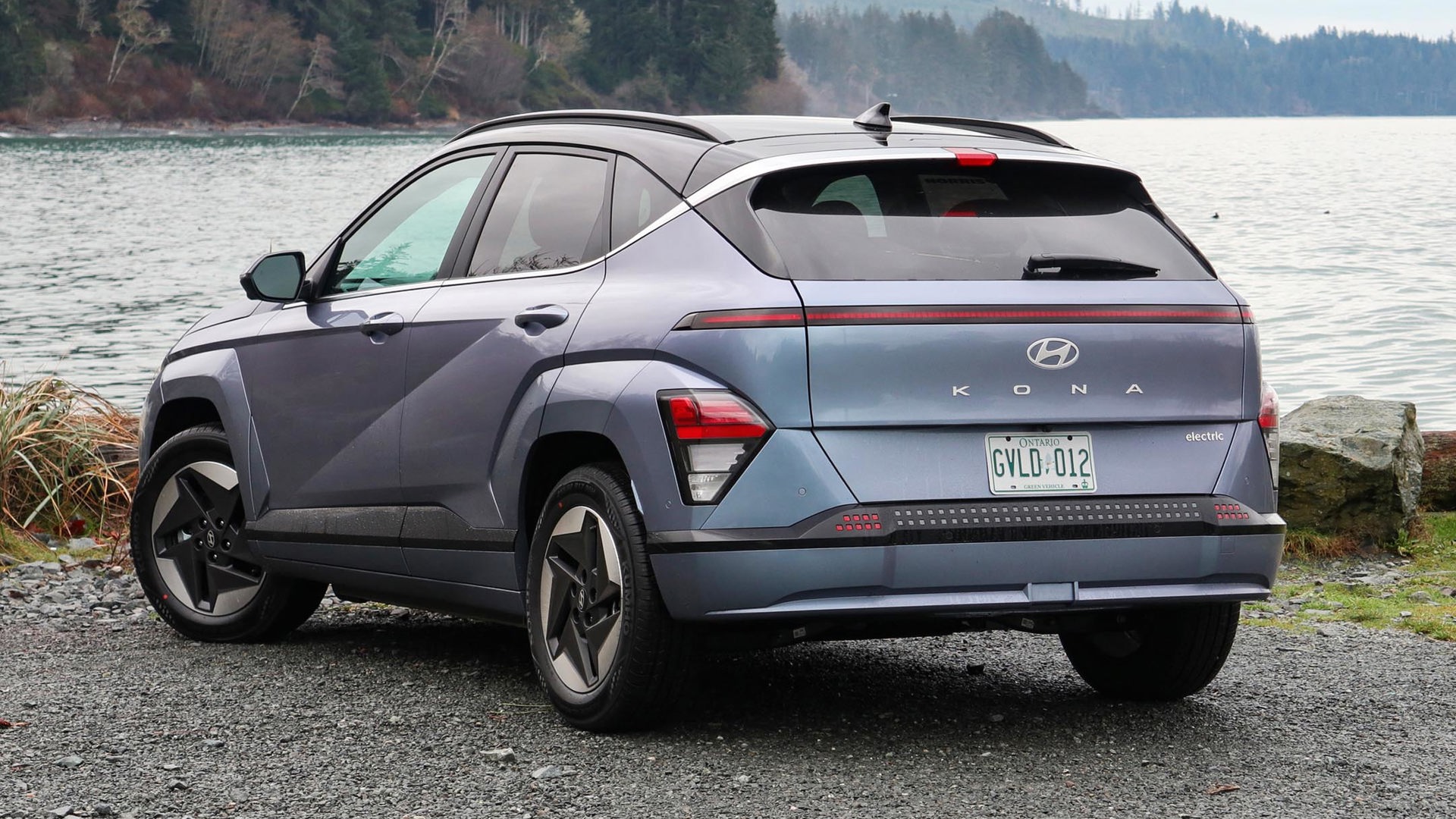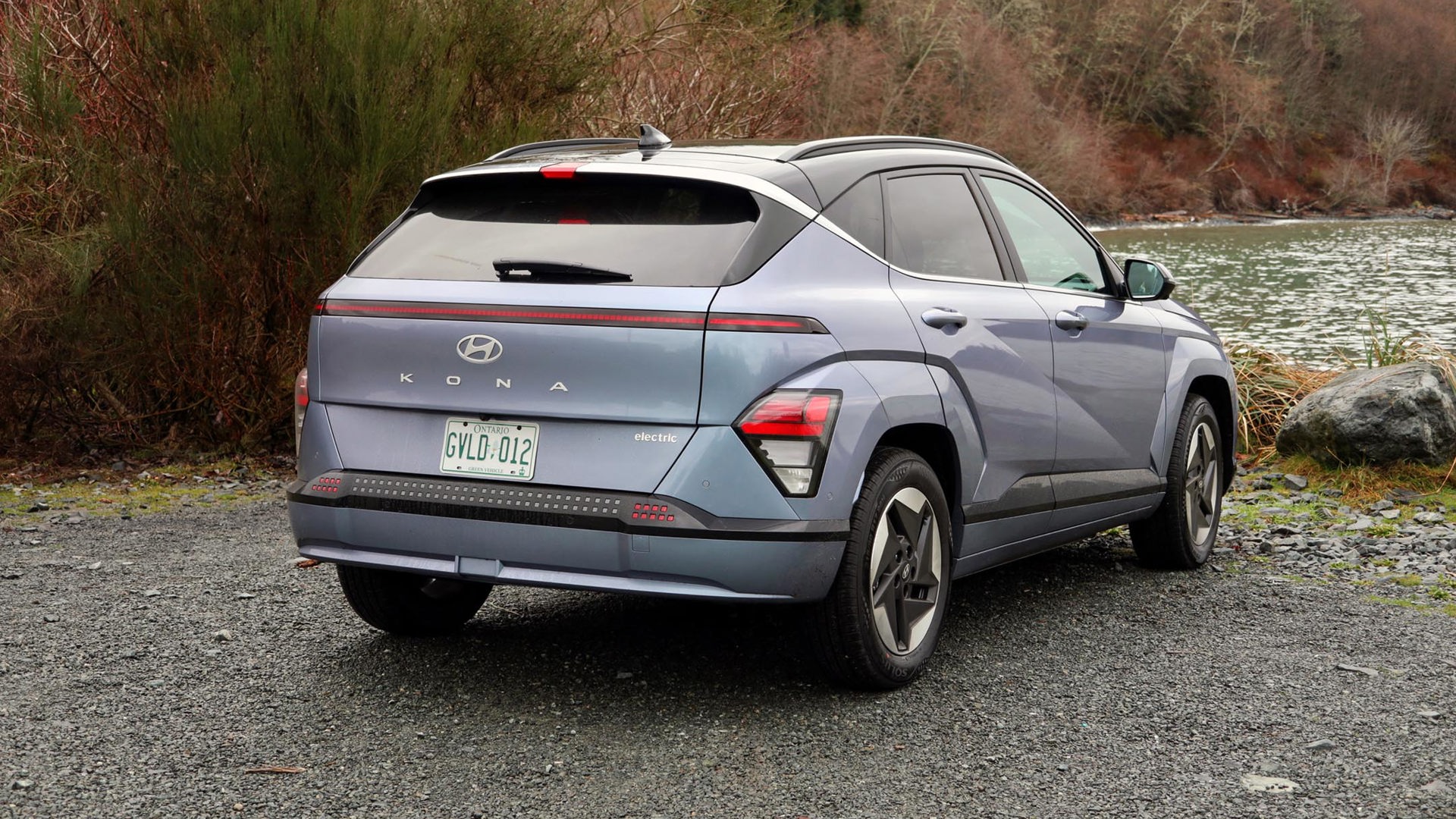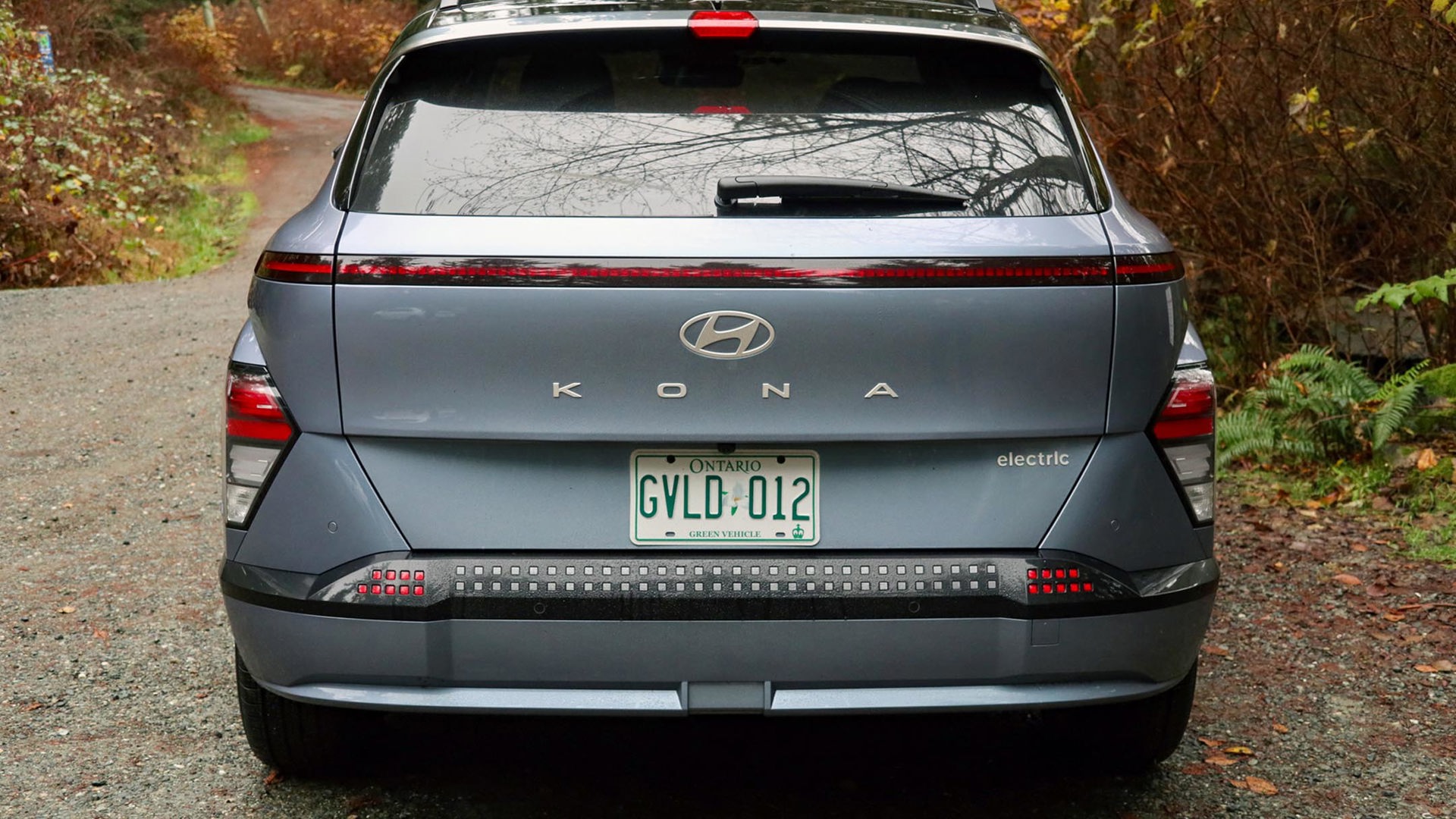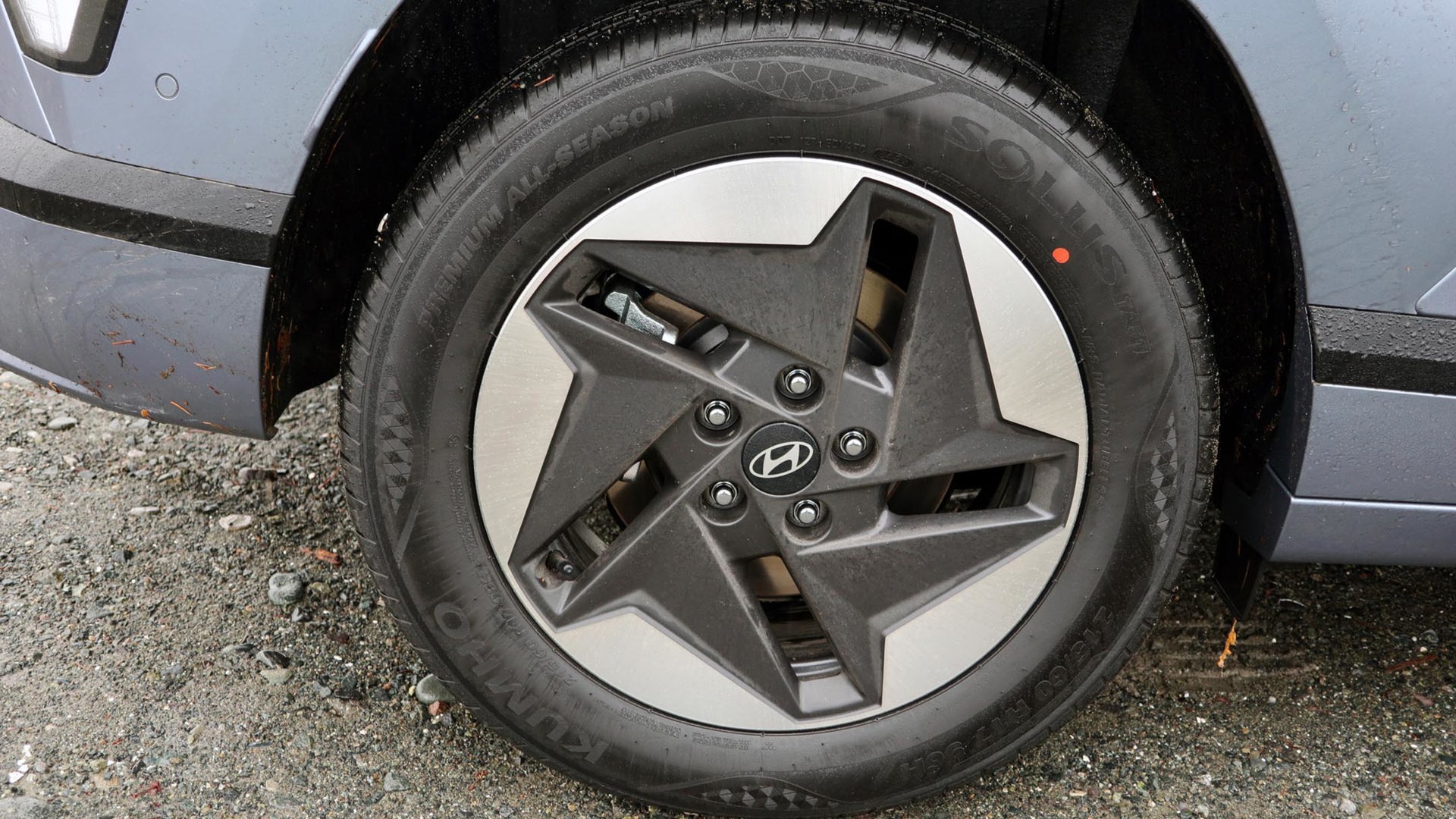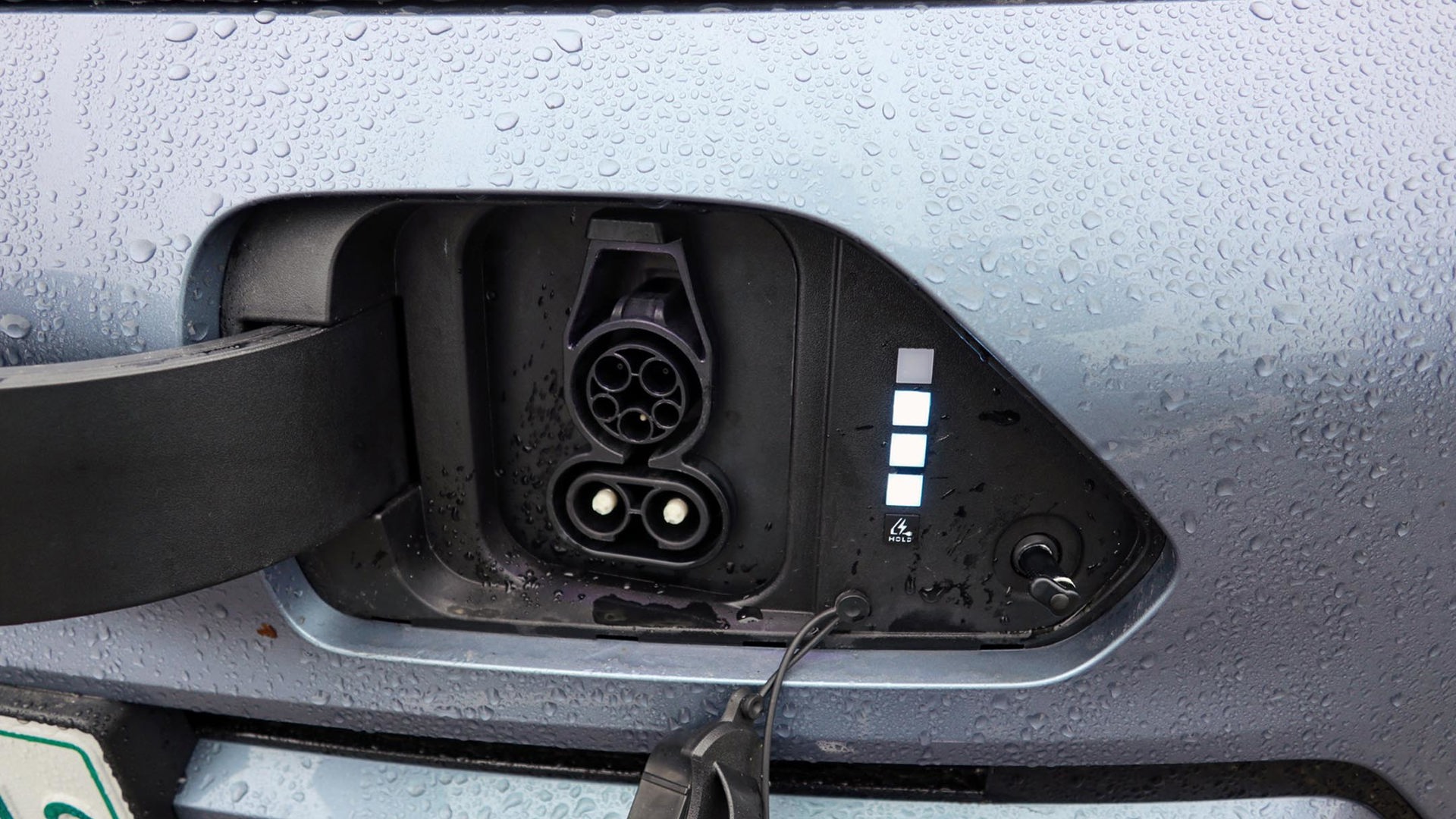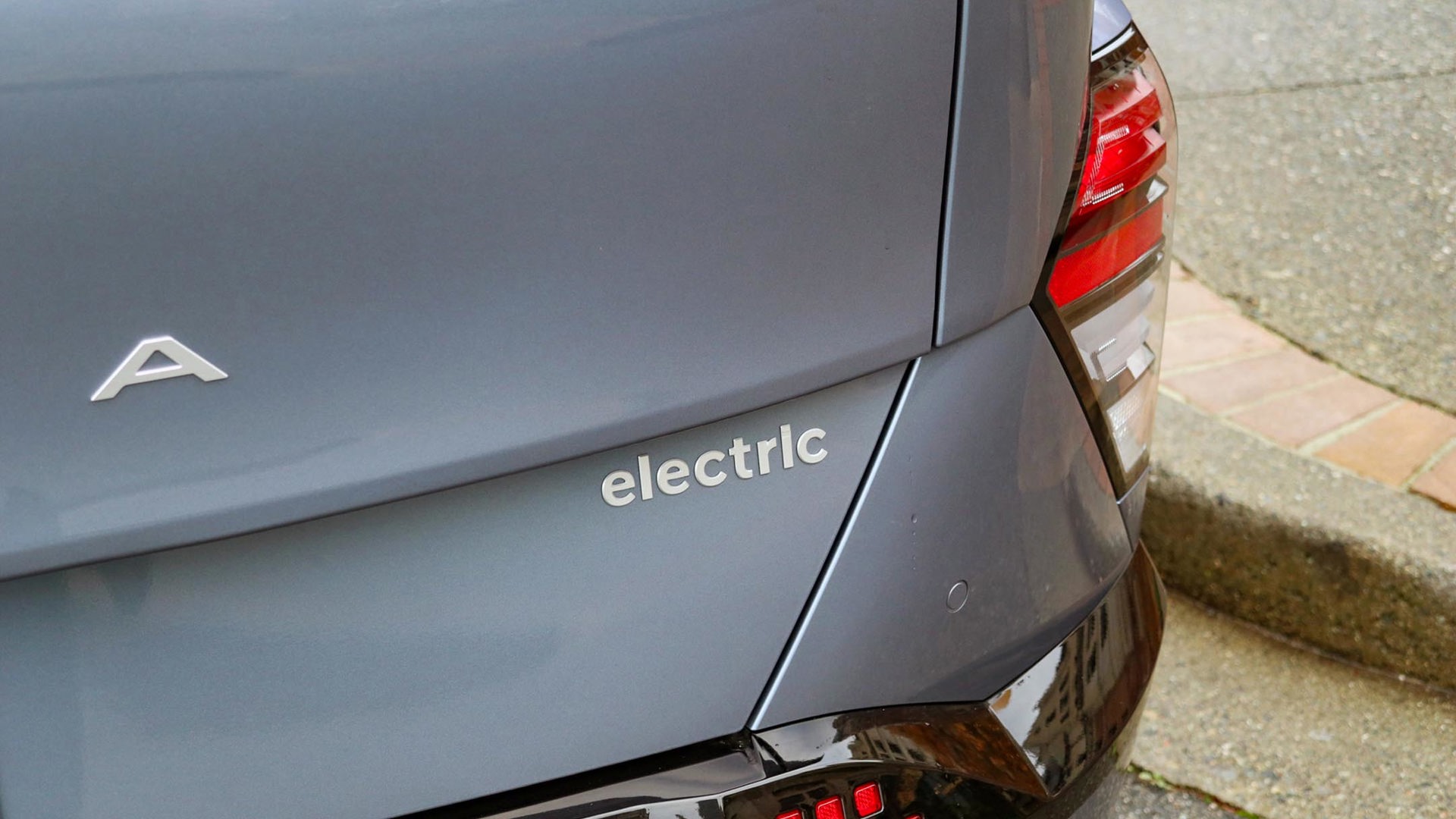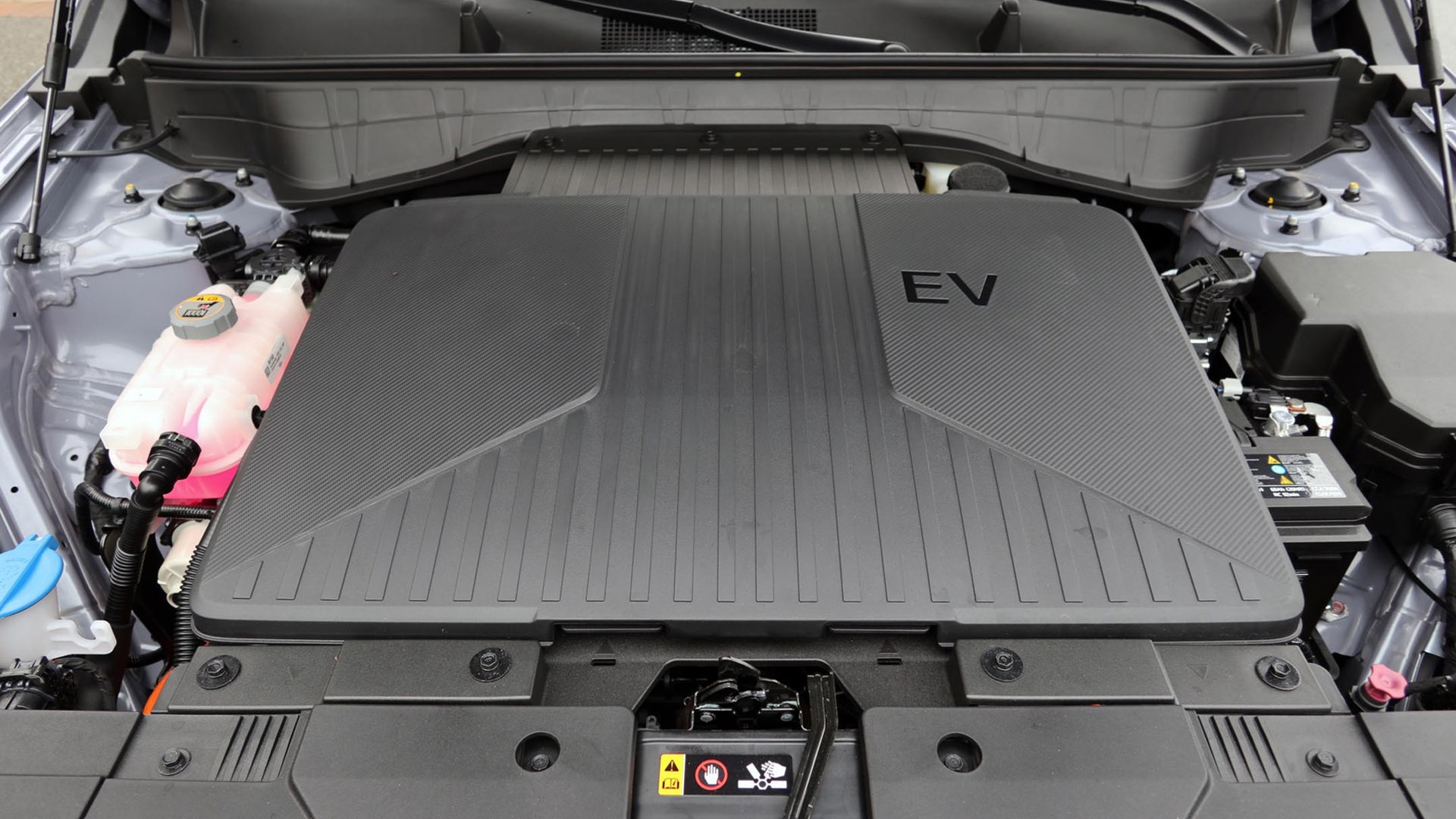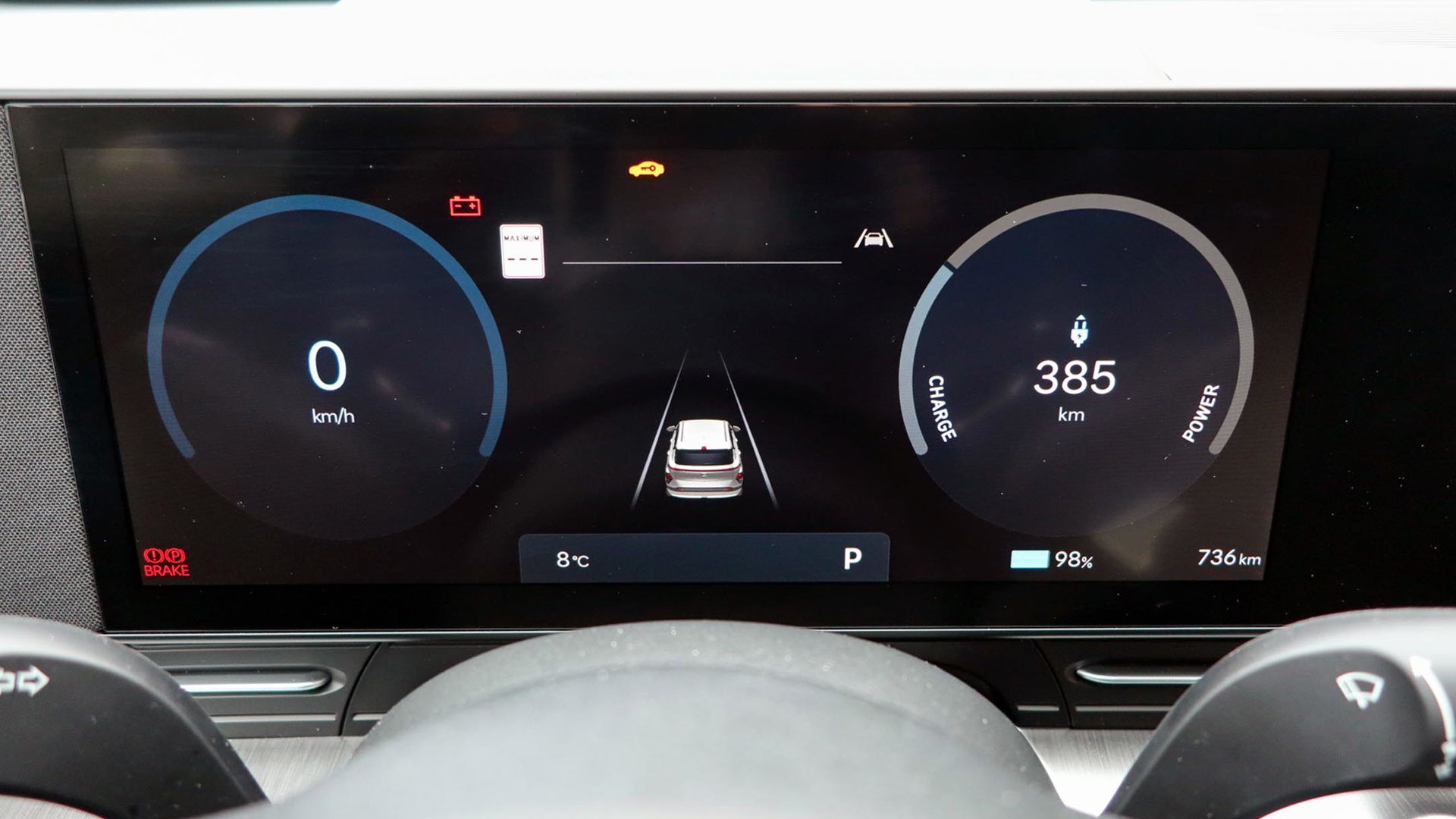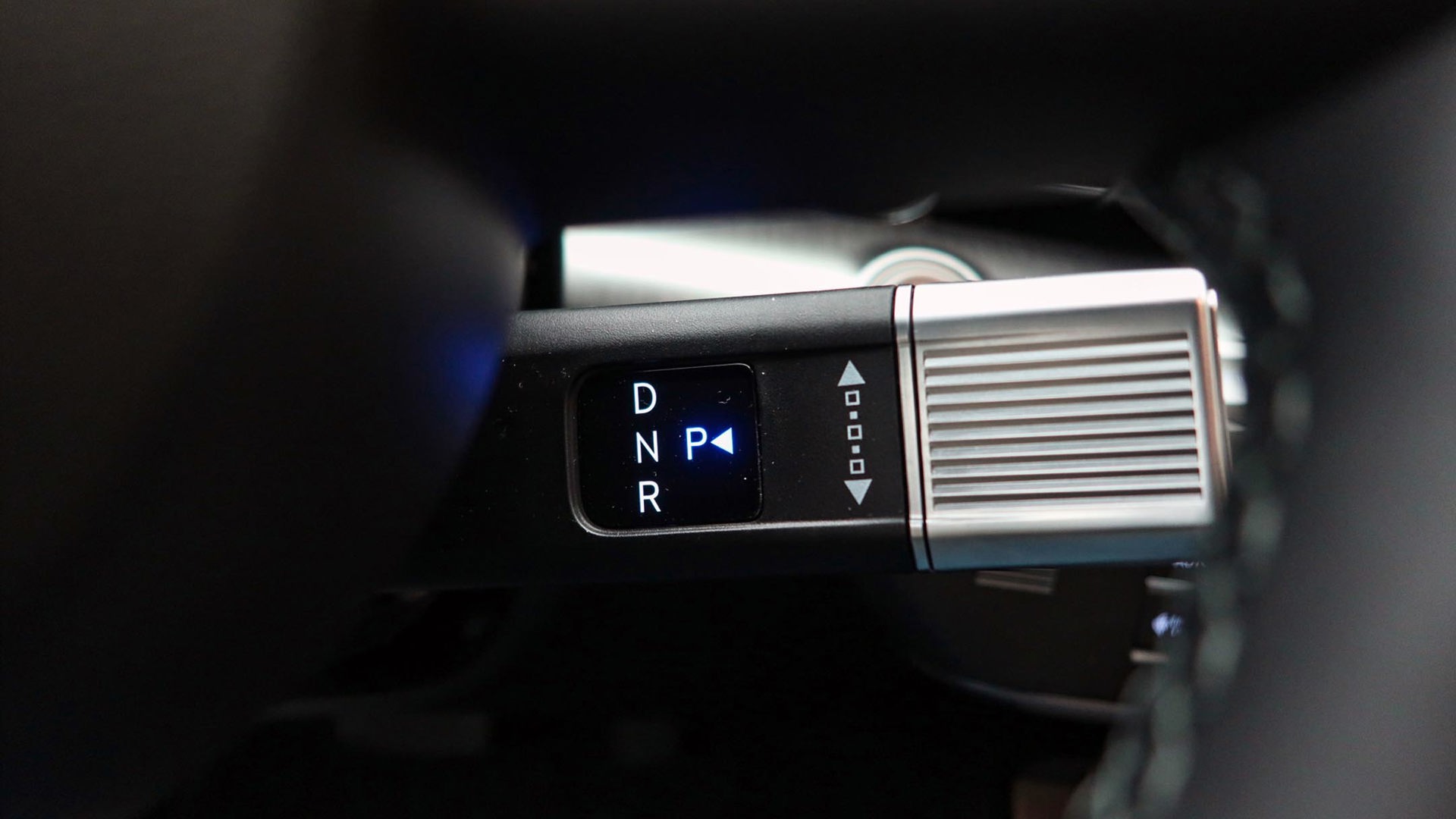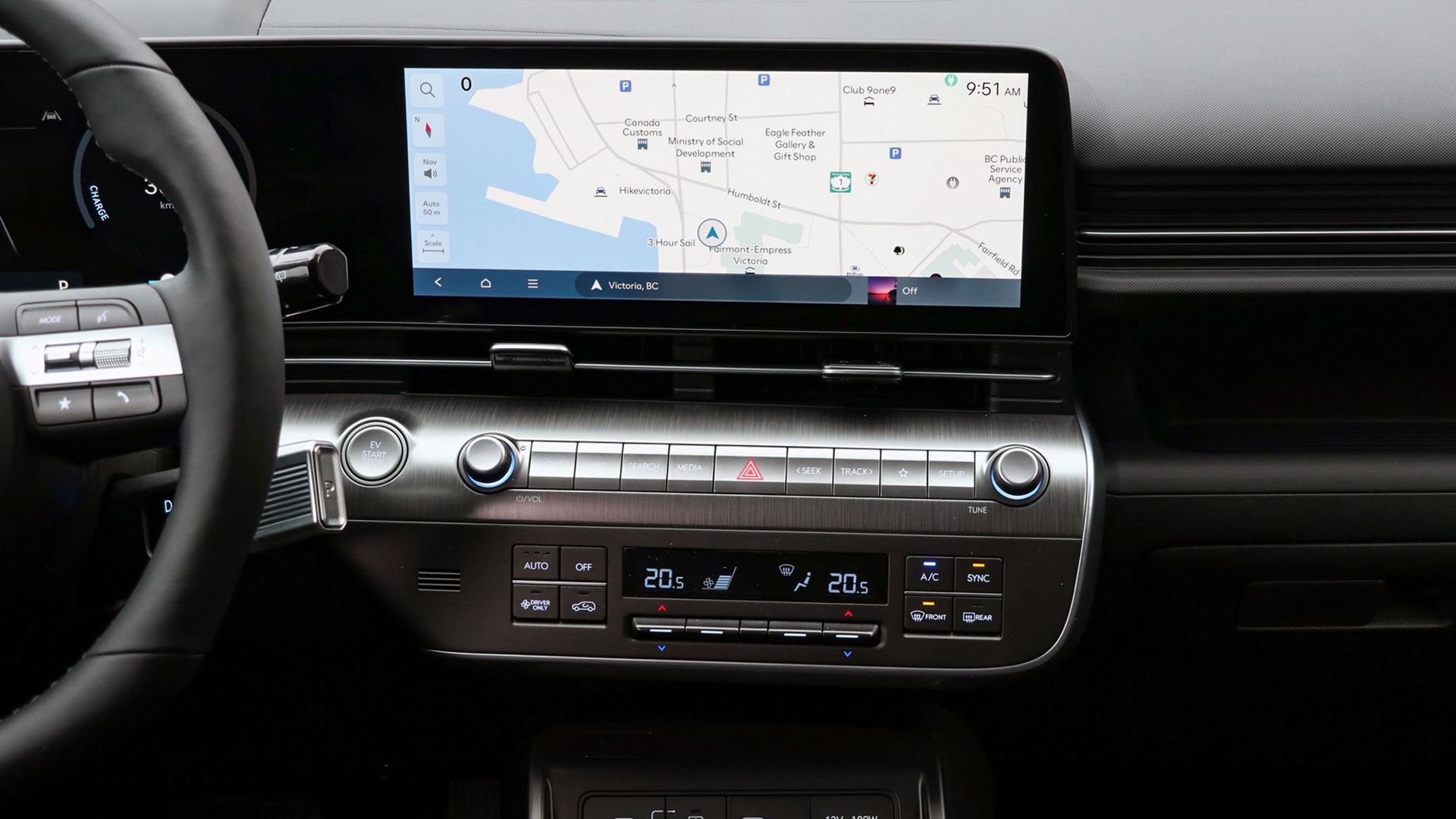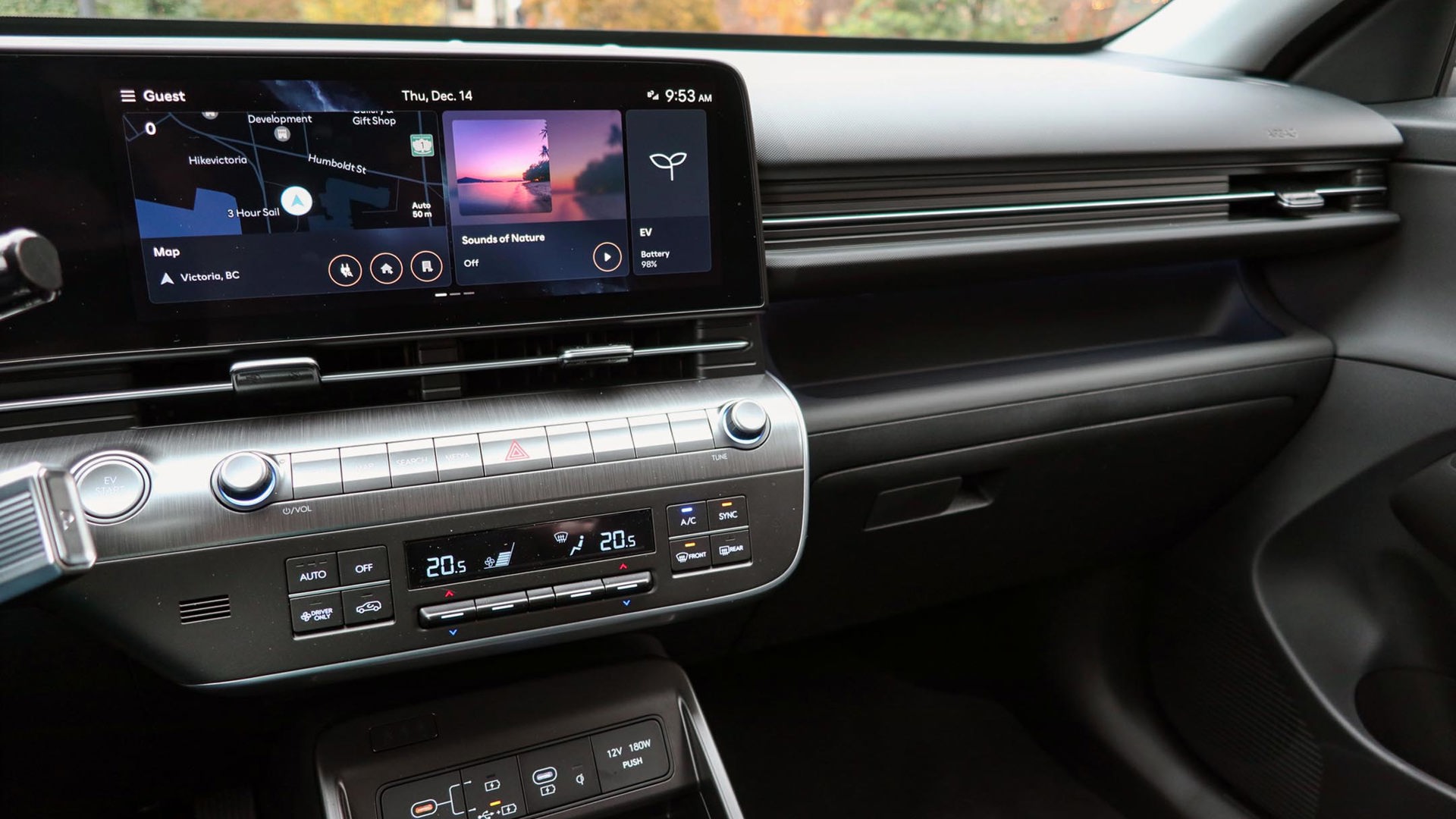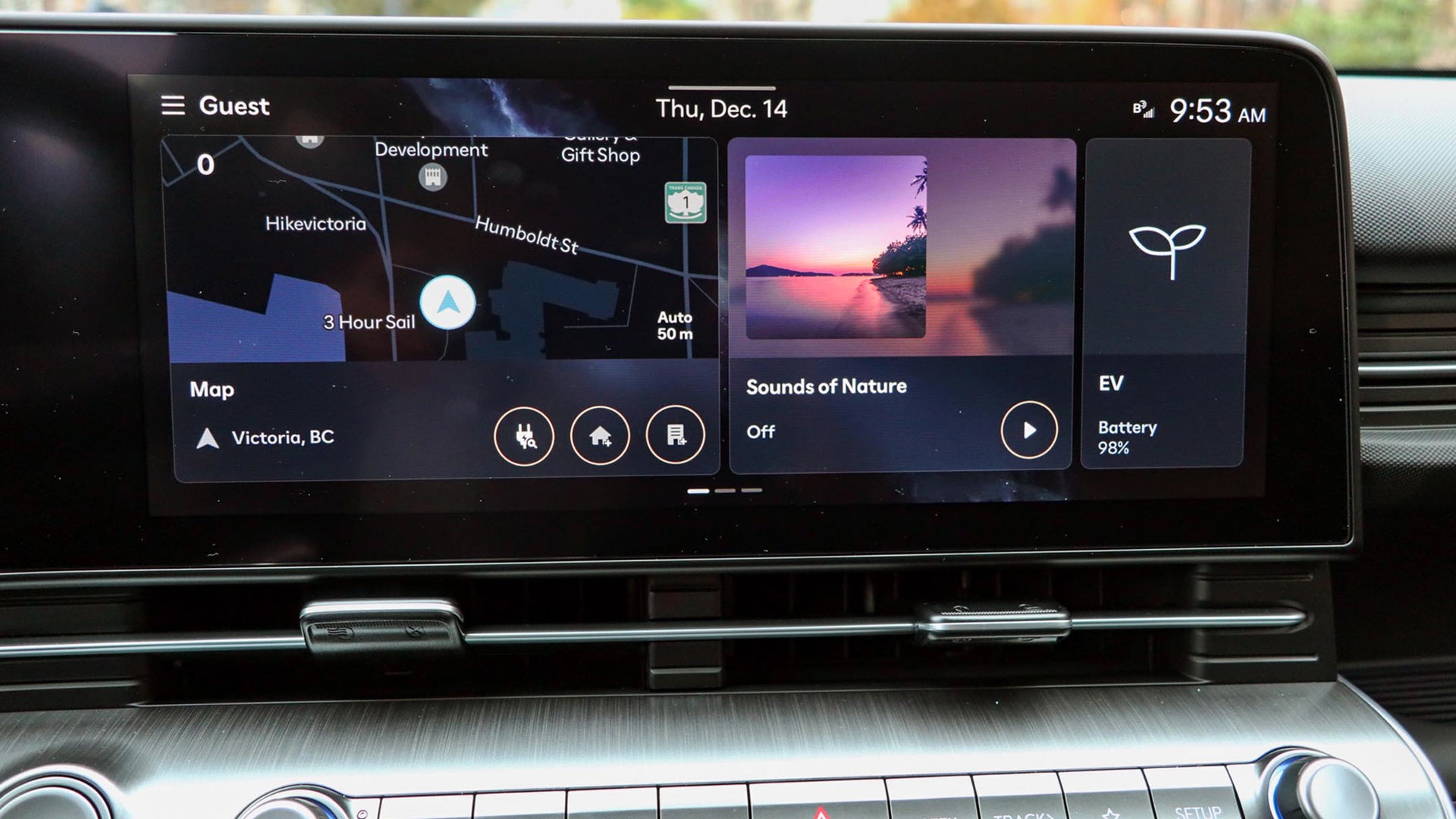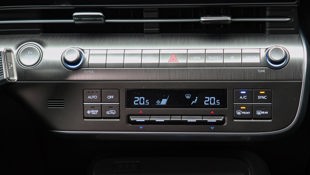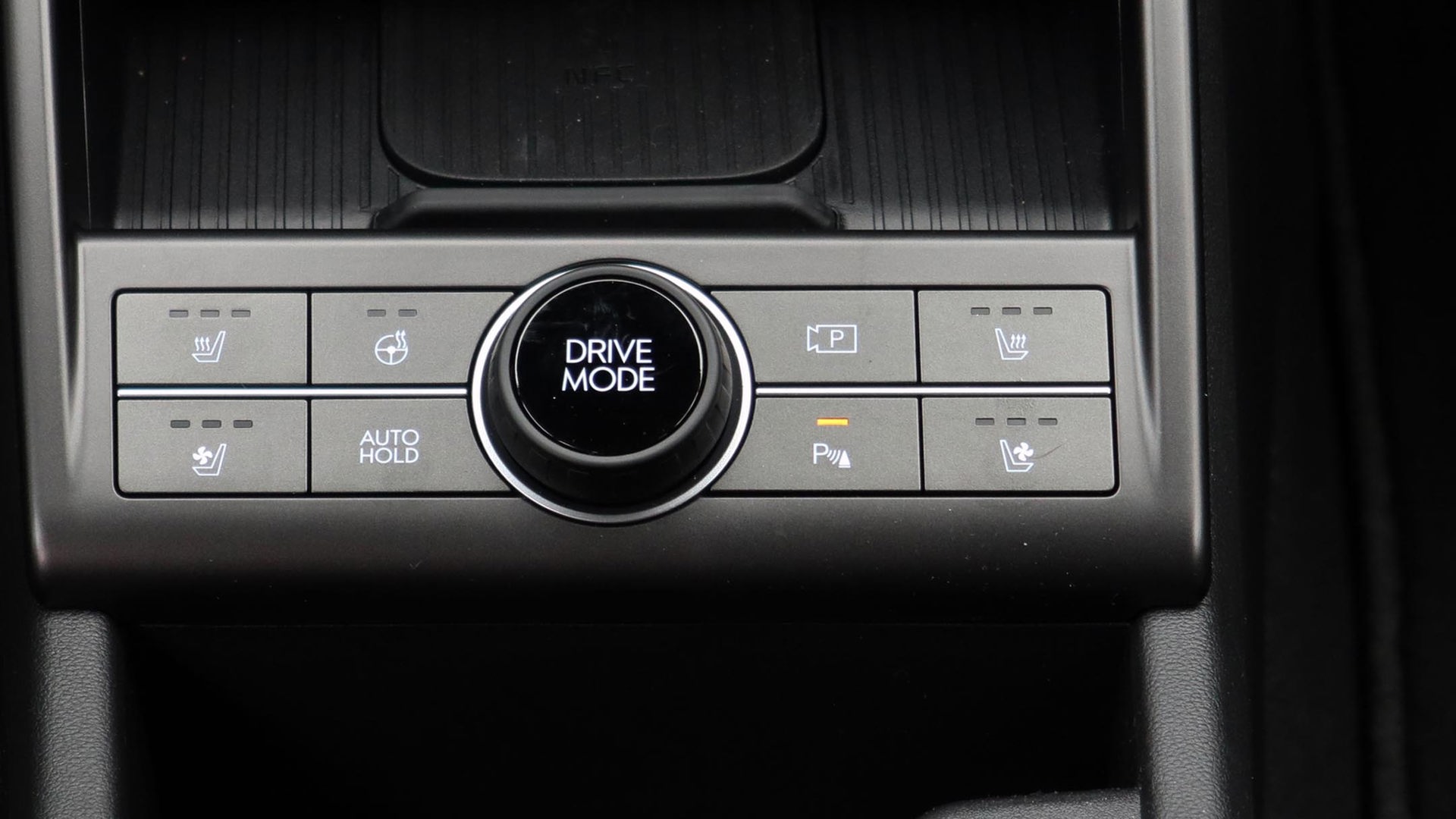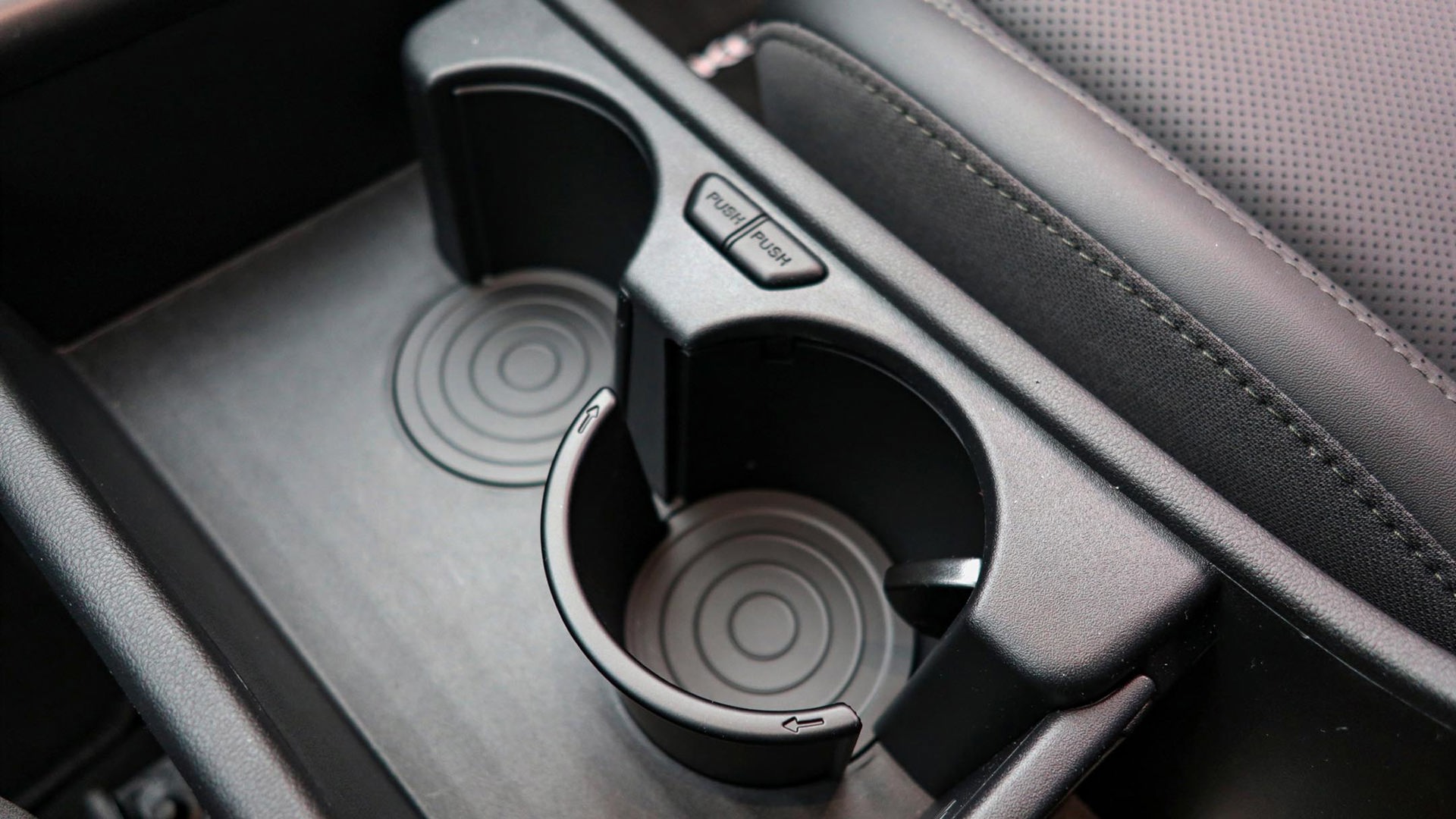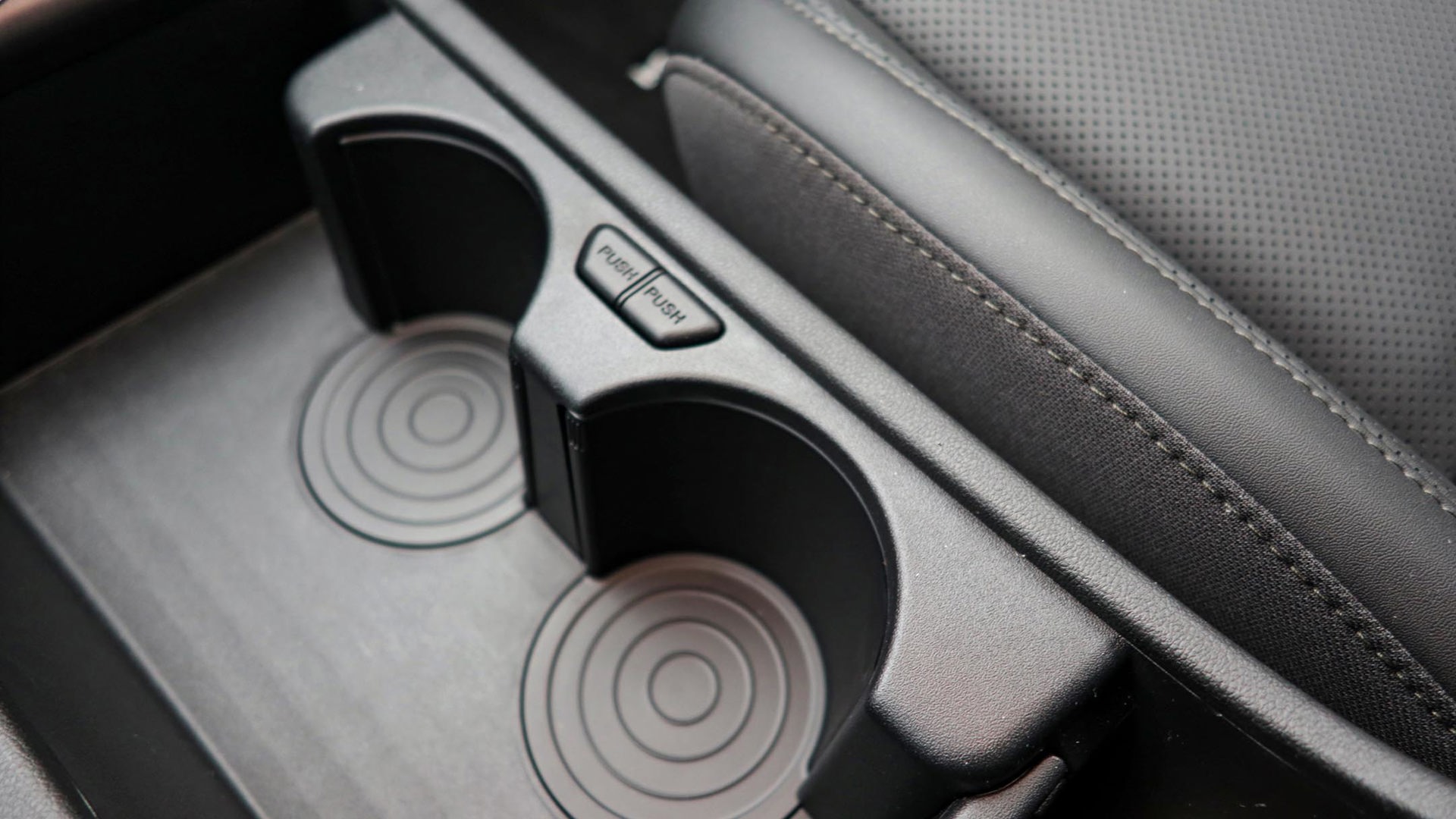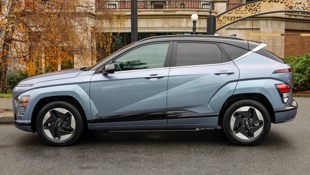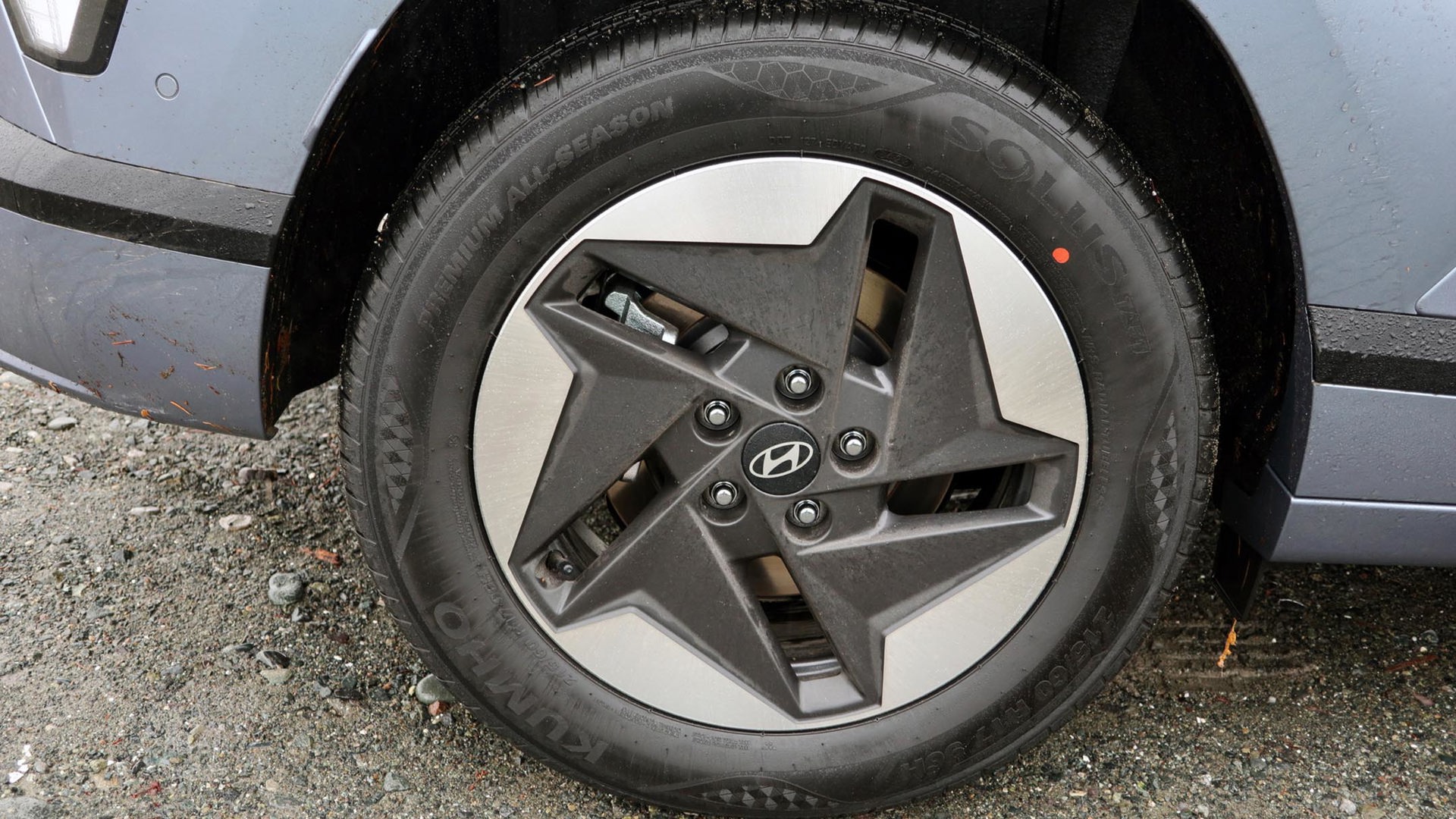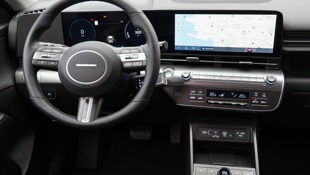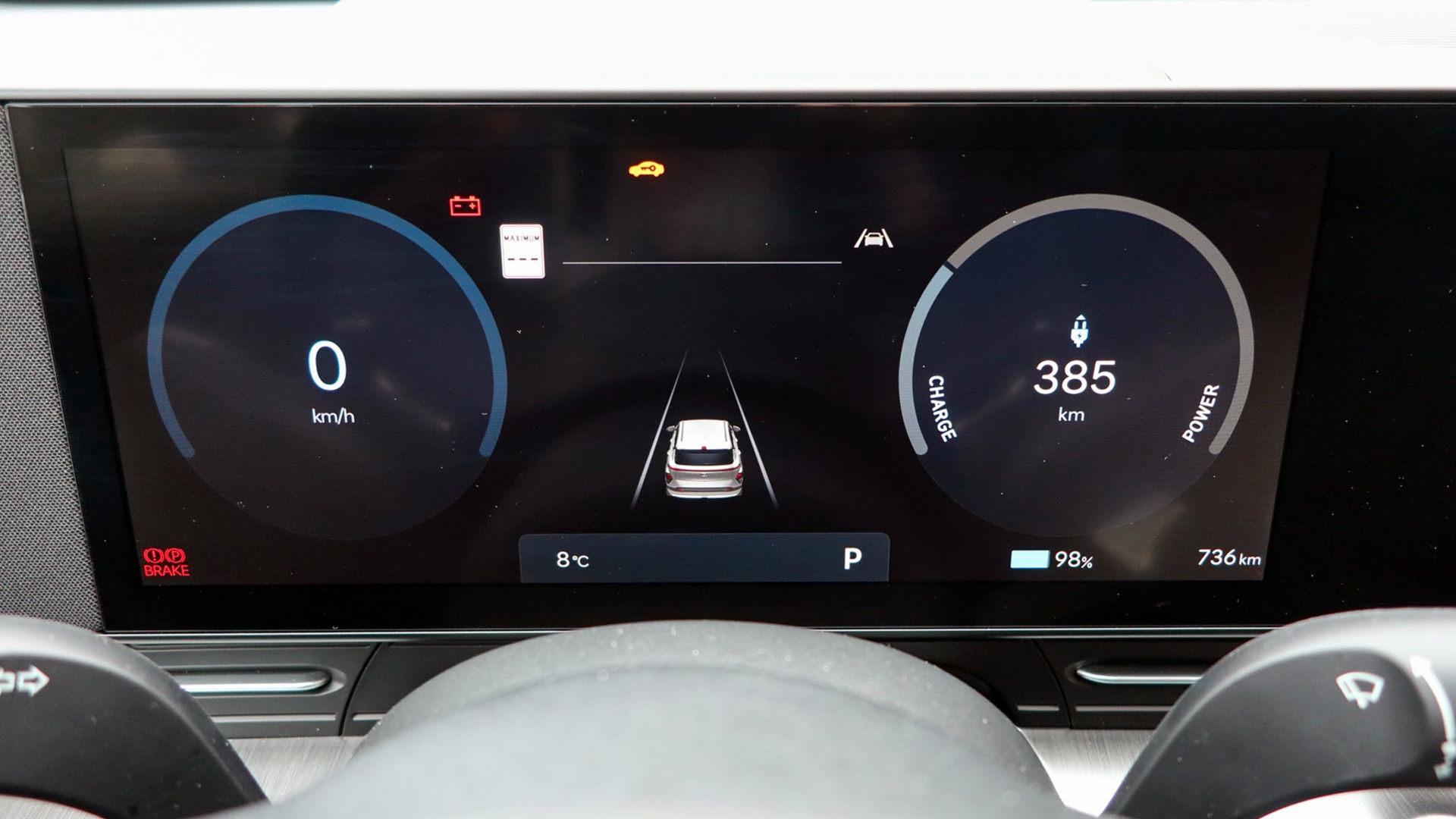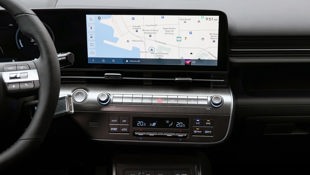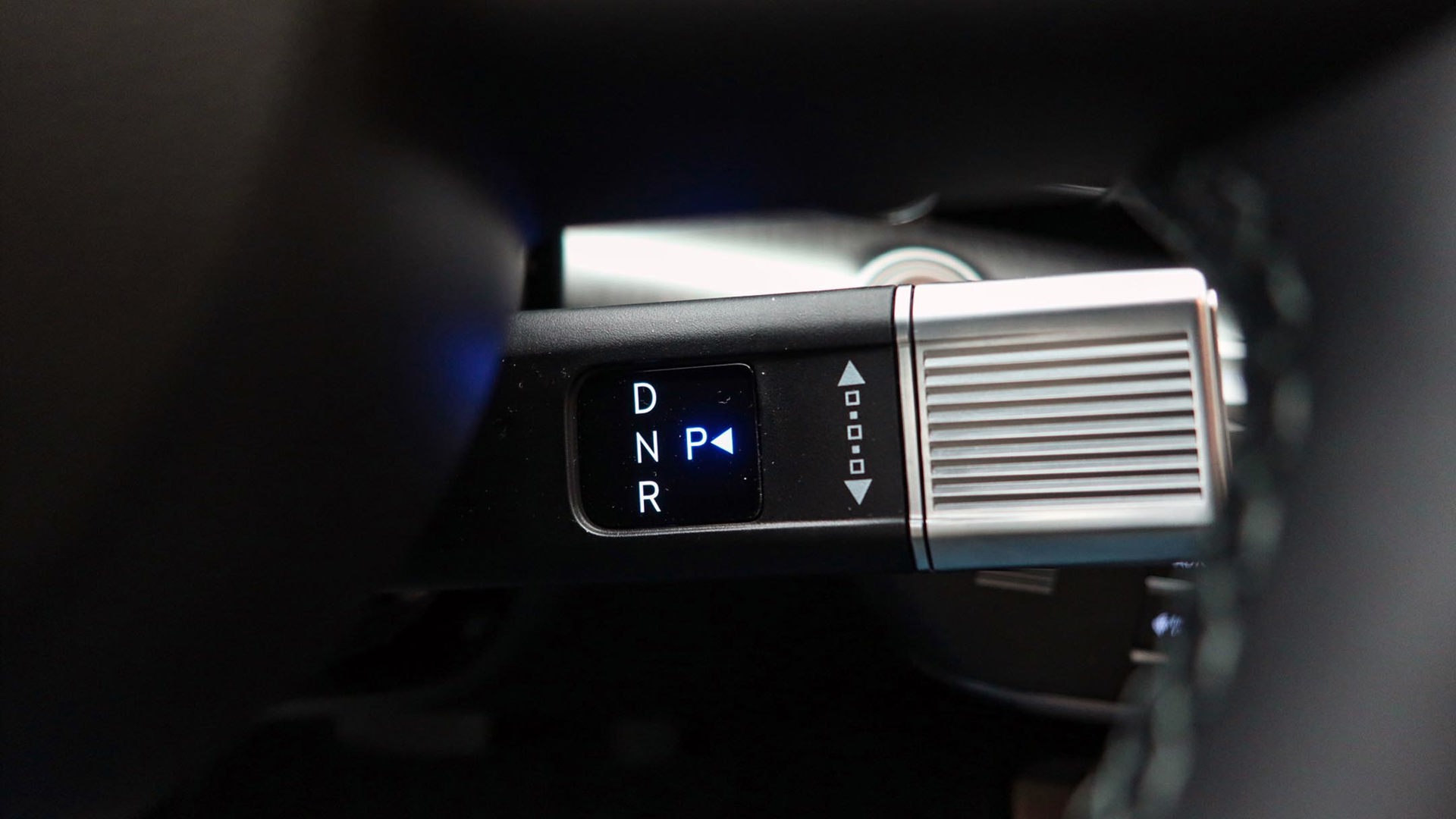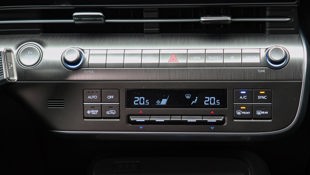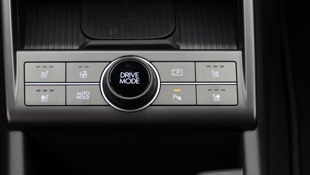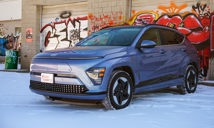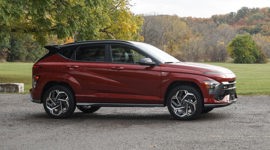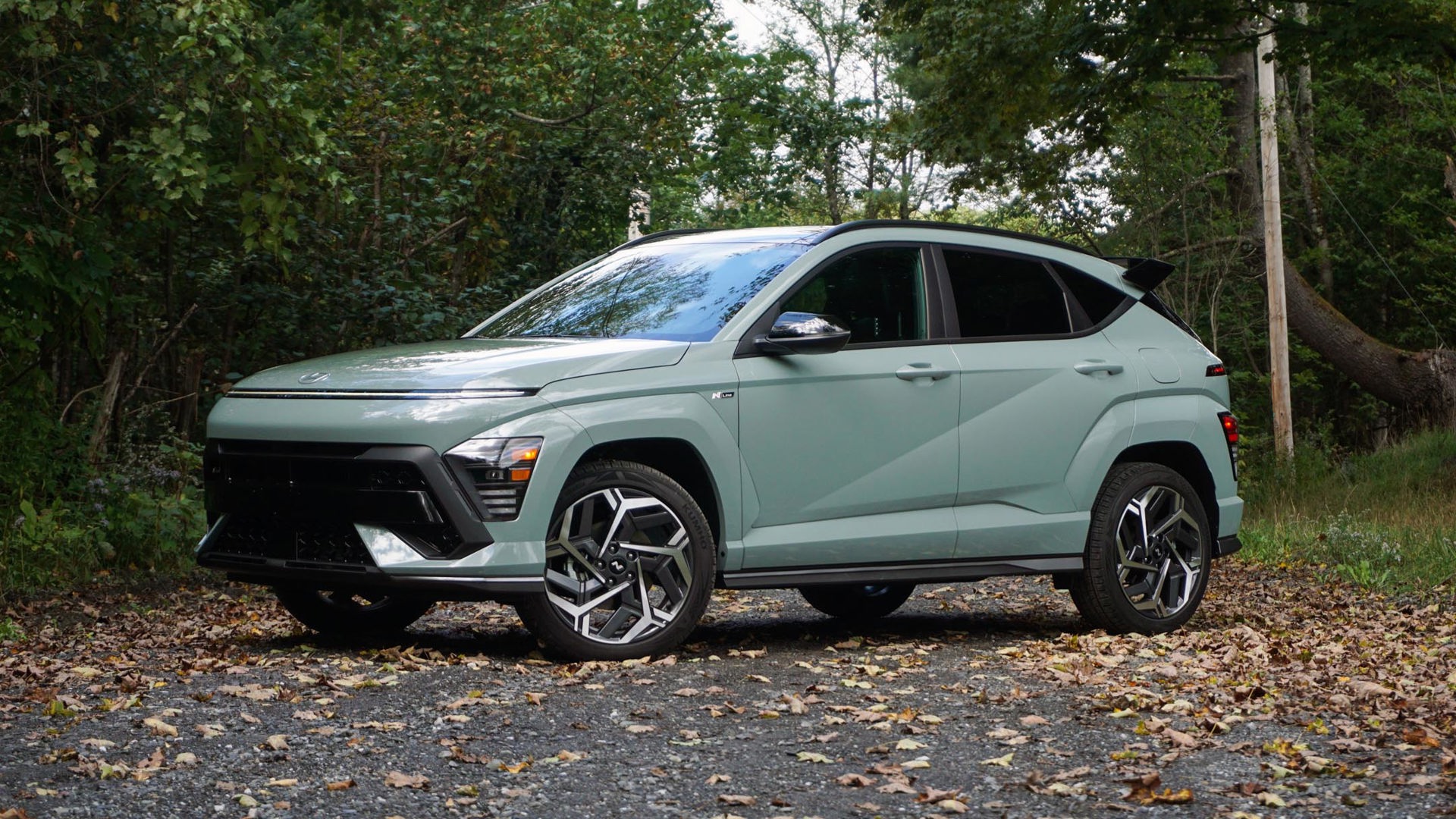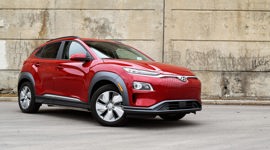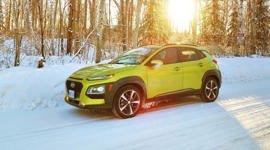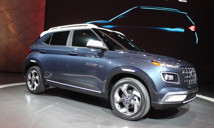Hyundai initially introduced its compact Kona crossover for 2018, and a year later added a battery-powered version.
Now the Kona lineup morphs into a redesigned version for 2024, but with a twist: this model’s all-new platform was designed specifically for electricity, with the gas powertrains adapted to fit. The 2024 Kona Electric gets a bit bigger; its driving performance is tweaked; and it receives a new cabin design that's likely one of the best on the market right now for practicality and storage space – but more on that in a bit.
The first thing you notice is the new styling. Hyundai has traded in the outgoing model’s curvier looks for sharper lines that can be polarizing and might not age all that gracefully. The Kona Electric, along with the gas-powered N Line trim, benefits considerably from its body-coloured wheel arches; on the lower gas-only trims, they’re dark grey and look tacked on after the fact. Gas models can have up to 19-inch wheels, but the electric version’s are 17-inch alloys, which improve range and will likely cost less for winter or replacement tires.
Electric First
The Kona Electric’s platform is new, but the electric motor carries over from the last-generation model. It still makes 201 hp, but torque is now 188 lb-ft – down from 290 lb-ft. That’s a considerable drop, but it’s for a reason, the automaker said. This is meant to be an everyday commuter, not a pocket rocket, and reducing the torque gives it smoother acceleration with better grip and handling. It’s front-wheel drive (FWD) only, mostly due to the weight and packaging involved in adding a second motor for all-wheel drive (AWD), although Hyundai isn’t entirely ruling out all-wheel in future models.
The battery size increases from 64.0 kWh to 64.8 kWh, and range increases slightly from 415 km to 420, even though the new model is 150 mm (5.9 in) longer and weighs around 80 kg (176 lb) more than before. The big news is that on a Level 2 charger – the type you’d get at home or work – the charging time to a full battery drops by three hours, down to six hours and 14 minutes. The front-mounted charging door can now be heated up to prevent it being frozen shut on icy days. The battery also gets an improved pre-conditioning heating and cooling system, which optimizes it prior to charging. It can automatically start to do this if a charging station has been set as a destination in its navigation system, or you can start the process manually through the centre screen.
On rain-dampened roads around Victoria, B.C., the Kona Electric proved that the decrease in torque shouldn’t be an issue for most drivers. It has excellent road manners in city traffic, accelerating smoothly and without drama; and on the highway it’s powerful enough to merge confidently and keep up with traffic. The steering is responsive, it corners well, and the ride is smooth and well-composed. It’s not an exciting sporty machine, but that’s not the point. It’s a comfortable, smooth-driving everyday vehicle that just happens to be electric.
It includes regenerative braking, which captures energy otherwise lost during deceleration and feeds it back as electricity into the battery. The regeneration level can be adjusted using paddles on the steering wheel.
More Functional
The redesigned interior is plain but functional, and includes a tablet-style display that incorporates two 12.3-inch screens, one for infotainment and the other for instrumentation, with wireless Apple CarPlay and Android Auto. Refreshingly, many functions are accessed with buttons or dials, including the climate control, heated and ventilated seats, and drive modes, which is less distracting than tapping through screen menus to activate them – and there are hard buttons to bring those screens up, too.
Where all the Kona models really shine is how much thought went into storage space. Cargo volume increases to 723 L with the rear seats in place and 1,803 L when they’re folded, up from 544 and 1,296 L in the outgoing one. There’s a dual-height cargo floor, and the hard cargo cover can be detached and slid into clips that hold it against the rear seatbacks, so you can load taller cargo without wondering where to stash the cover. There’s also a small storage area under the hood.
The gear selector is now a twist-style stalk on the steering column, leaving more storage space on the centre console. That console includes cupholders that swing out when needed or slide away for more room, and a removable storage divider. The front seats are comfortable, and rear-seat legroom, while not overly generous, is about average for the segment.
Properly Equipped
The Kona Electric will come in two trims. The Preferred includes heated seats and steering wheel, cloth upholstery, navigation, dual-zone automatic climate control, adaptive cruise control with stop-and-go, emergency front braking, blind-spot monitoring, lane-keep assist, automatic high-beam control, and highway driving assist that provides some help steering around bends in the road.
The Ultimate tested here further adds rain-sensing wipers, faux-leather upholstery, a power-adjustable driver’s seat, upgraded stereo, wireless smartphone charger, head-up display, sunroof, digital key access via a paired smartphone or watch, surround-view cameras, camera-based blind-spot monitoring, and remote parking assist, which lets you move the vehicle into or out of a parking space with the key fob while you’re standing beside it.
Final Thoughts
The 2024 Hyundai Kona Electric will go on sale in late December, starting at $48,324 for the Preferred and $53,124 for the Ultimate. Both prices including a non-negotiable delivery fee of $1,925, but not any applicable provincial or federal rebates for electric vehicles (EVs). It’s a decent driver that’s intelligently priced, and should do well with Canadians who are ready to plug in.
